Great choice! Your favorites are temporarily saved for this session. Sign in to save them permanently, access them on any device, and receive relevant alerts.
- Sailboat Guide
Laser 2 is a 14 ′ 5 ″ / 4.4 m monohull sailboat designed by Bethwaite Design and Ian Bruce and built by Performance Sailcraft between 1978 and 1987.

Rig and Sails
Auxilary power, accomodations, calculations.
The theoretical maximum speed that a displacement hull can move efficiently through the water is determined by it's waterline length and displacement. It may be unable to reach this speed if the boat is underpowered or heavily loaded, though it may exceed this speed given enough power. Read more.
Classic hull speed formula:
Hull Speed = 1.34 x √LWL
Max Speed/Length ratio = 8.26 ÷ Displacement/Length ratio .311 Hull Speed = Max Speed/Length ratio x √LWL
Sail Area / Displacement Ratio
A measure of the power of the sails relative to the weight of the boat. The higher the number, the higher the performance, but the harder the boat will be to handle. This ratio is a "non-dimensional" value that facilitates comparisons between boats of different types and sizes. Read more.
SA/D = SA ÷ (D ÷ 64) 2/3
- SA : Sail area in square feet, derived by adding the mainsail area to 100% of the foretriangle area (the lateral area above the deck between the mast and the forestay).
- D : Displacement in pounds.
Ballast / Displacement Ratio
A measure of the stability of a boat's hull that suggests how well a monohull will stand up to its sails. The ballast displacement ratio indicates how much of the weight of a boat is placed for maximum stability against capsizing and is an indicator of stiffness and resistance to capsize.
Ballast / Displacement * 100
Displacement / Length Ratio
A measure of the weight of the boat relative to it's length at the waterline. The higher a boat’s D/L ratio, the more easily it will carry a load and the more comfortable its motion will be. The lower a boat's ratio is, the less power it takes to drive the boat to its nominal hull speed or beyond. Read more.
D/L = (D ÷ 2240) ÷ (0.01 x LWL)³
- D: Displacement of the boat in pounds.
- LWL: Waterline length in feet
Comfort Ratio
This ratio assess how quickly and abruptly a boat’s hull reacts to waves in a significant seaway, these being the elements of a boat’s motion most likely to cause seasickness. Read more.
Comfort ratio = D ÷ (.65 x (.7 LWL + .3 LOA) x Beam 1.33 )
- D: Displacement of the boat in pounds
- LOA: Length overall in feet
- Beam: Width of boat at the widest point in feet
Capsize Screening Formula
This formula attempts to indicate whether a given boat might be too wide and light to readily right itself after being overturned in extreme conditions. Read more.
CSV = Beam ÷ ³√(D / 64)
Thanks to Ken H. for contributing drawing scanned from orginal brochure. The LASER 2 has a convoluted history. There was the LASER II FUN, and the LASER II REGATTA, a LASER FUN NEW WAVE, (which added an assym. spinnaker). All retired before 1990.
Embed this page on your own website by copying and pasting this code.
- About Sailboat Guide
©2024 Sea Time Tech, LLC
This site is protected by reCAPTCHA and the Google Privacy Policy and Terms of Service apply.

Laser 2 Info & Links
The Laser 2 (Laser II) is a high-performance racing dinghy designed by Frank Bethwaite in 1979, in a similar fashion to the strict one design Laser dinghy. The Bethwaite family went on to design the well known and highly respected 29er & 49er classes.
Designed to be sailed by a crew of two, the lightweight hull comes readily to the plane, which makes for fast and exciting sailing, especially off the wind on a 3 sail reach. Due to it's relatively short length, it's very responsive and can be challenging to sail. Quick to rig and easy to right from a capsize, all sail controls are kept simple. Its only real downside is its poor light wind performance. It's best suited to light to medium weight crews.
The hulls and fittings are very well made and will usually last a long time. Older boats usually clean up well and the original fittings can normally be bought back into action using WD40 or silicon spray.
Several variations of the Laser 2 were produced:
Laser 2 Regatta
The Laser 2 Regatta is the racing version equipped with spinnaker and trapeze (earlier versions used bags instead of a shute). This is the standard and most common version of the Laser 2 dinghy, which was extremely popular and heavily marketed by the Laser Centre during the 1980s and early 1990s.
Laser 2 Fun
The Laser 2 Fun was designed for recreational sailing. It doesn't have a spinnaker, features brightly coloured sails, reefing points on the mainsail and a furling jib mechanism.
Laser 2 Fun New Wave
A short lived Laser 2 featuring an asymmetric spinnaker.
Escape Expedition
The Escape Expedition 14.5 was a Laser 2 hull combined with an Escape SmartRig.
The Laser 3000 is essentially a Laser 2 hull with an asymmetric rig and open, self-draining cockpit, which was introduced in 1996.
Vandercraft 3000 (V3000)
The V3000 is an improved version of the Laser 3000.
- UK Laser 2 Facebook Page
- UK Laser 2 Class Association
- International Laser 2 Class Association
- German Laser 2 Class Association
- Laser Two Land
- V3000 Class Association
- Vandercraft V3000 page
- Laser 2 Rigging Manual
- Vanguard Laser 2 Rigging Manual
- Laser Fun & Fun New Wave Rigging Manual
- Class Rules
- Measurement Diagram 1 (hull layout)
- Measurement Diagram 2 (sails)
- Measurement Diagram 3 (spinnaker)
Sail numbers by year
Rope lengths.
Taken from the rigging manual:
© J. Bell 2024
Laser 2, From idea to reality! A guide for owners and boat buyers
The ‘Nearly’ Complete Boat
This post is from 2009. It’s an interesting read. I’ve just started (2017) a GP14 dinghy restoration which I’m documenting here .
This is the story of one man and his boat. It all started when I used my Tesco Clubcard points to go on an RYA sailing course at Bala lake in North Wales in September 2009. I wanted to learn to sail properly for years but had never got around to doing it. I did the RYA level 2 course and learnt to sail in an RS Q’BA making use of the Jib on the second day. I really enjoyed the experience so decided to buy a boat of my own.
Roll forward approximately 2 days when my wife rings me whilst I was in Leeds (we live in Crewe) to say that she had more or less bought a Laser 2 Regatta dinghy from near Solihull and I had to get home to come help collect it. Being several months pregnant at the time didn’t put her in the best position for moving boats around so I got the next train home and a few hours later found myself collecting a boat trailer from a friend and heading down the M6 at huge speed (60 mph!). We decided to take the central Birmingham road instead of the M42. That was mistake number 1. For the next hour we sat in rush hour traffic (or so it seemed) to go the final three miles to the place the boat was being kept.
We arrived at a sea scouts base and were directed towards a boat with half of the parts missing on a trolley with a flat tyre. It wasn’t looking good but immediately all I saw in my head was myself sailing my very own boat just as I was learning to do a couple of days beforehand. Luckily my wife is a little less easily swayed that myself but for £170 who can argue? We were shown another Laser 2 he had in bits and were allowed to remove any parts we thought we needed. I ended up with a spare clamcleat and another Mast step. I even had the blisters to prove it. Sadly there was no daggerboard or rudder to speak of and, at the time (!!), I didn’t realise how much these parts cost. We handed over the cash and shoehorned the boat (and assorted bits) onto the home made trailer and proceeded to the nearest McDonalds (a tradition of ours whereby we have a McDonalds each time we buy something like a house, car or indeed boat). On the way out we decided to take the M42 and were rewarded with no traffic and a lovely drive back to Crewe. Mistake number two was not considering where we might store the boat in the short term as we live in a terraced house with no garage or parking! Luckily a friend who lives nearby lives in a much nicer house with a drive and place to store said boat.
In effect we were left with a Laser 2 dinghy, a mast, a launching trolley and a few basic cleats. The following is the list of things I had left to buy to get the thing on the water and their retail costs.
- £250.00 – Rudder
- £80.00 – Tiller & extension
- £270.00 – Dagger board
- £60.00 – Central main sheet block
- £80.00 – ALL the rope for the boat
- £50.00 – Sail Battens
- £50.00 – Kicking Strap (Kicker)
- £50.00 – Assorted bits including various shackles, cleats, blocks, vernier shroud adjusters and a bung!
There lied the enormity of my task. At the time of writing (Mid November 2009) I have just taken delivery of my final piece to the very large and expensive puzzle, the dagger board.
Over the last two months I have been frantically scanning sailing websites, forums, friends minds and of course eBay. the following details for those people who might be in a similar situation what I found and how I managed to get the boat together as cheaply as possible.
As soon as we got the boat to Manley Mere, it’s next resting place, I created the above list. Once I had finished weeping I got the parts catalogued and got on the internet.
Firstly a few things about the Laser 2 you might not have known.
- Laser 2 is a closed class meaning that in order to race them the parts must be official Laser stock and therefore confirm to strict size, material and weight constraints. If you want to get your boat together on a budget then ignore this rule except to assume that parts will NOT be readily available and those that are will NOT be cheap (as above demonstrates)
- Laser 2 is no longer made. This, once again, reflects the fact that parts will be scarce although does give you an idea that at boat jumbles and sailing clubs there might be a few rotting that you could ask about buying.
- Laser 2 was superseded by the Laser 3000. This is in effect good news because many of the parts were used in the new boat. Take, for example, the dagger board which was not changed from from the Laser 2 spec and will therefore fit your boat if you need one.
- Laser 2 has an American counterpart. This means that parts for the boat might be available in the states although steer clear of the sails because they are, according to the head of the North American Laser 2 Class Association, not a good quality as those in the UK.
- Laser Performance Europe has abandoned the boat as far as I can tell and have handed over the rights to sell parts for the UK to a company called Northampton Sailboats ( http://www.sailboats.co.uk ). The staff are friendly and helpful although stock parts at prices which, in my opinion, should only be considered as a last resort. I had to get my Kicker from them for £45.00 plus postage but the more able among you might be able to fabricate one just as easily!
So where did I get my parts from?
After a few days of scouring the internet I decided to bite the bullet and get my wallet out. After the cobwebs had settled I got in touch with several sellers on websites like eBay and Boatsandoutboards.com where you will find plenty of boat parts but not so much Laser 2.
Cost so far: £170.00
I did several hundred Google searches and enquired about some rope to Joe at ropeloft . I rung Joe and within an hour of being on the phone we hatched a plan and created a list of what I needed. This was fairly good seeing as I had no idea what I needed except to describe to him what I did have (which was not a lot!). In the next few days arrived a huge bundle of high quality rope to do everything for the boat I needed including a few bundled offcuts. The grand total was £40.00 all in and the best thing was I actually received the goods before I paid. In my book that does show a very trusting and kind person indeed! I would recommend not using the website as at the time I found it hard to navigate to the extent I got bored and rung him. I would really recommend picking up the phone with any transaction beforehand because the people on the other end are usually really friendly and able to help and in my case it paid off because I got exactly what I needed with zero effort and minimal cost.
Cost so far: £210.00
Next on the list was a few bits and pieces such as a bung, kicker, vernier shroud adjusters and a back to back swivel block for the horse. Sadly for these I went to http://www.sailboats.co.uk because they are generally low cost items I needed and I thought best to get official parts. Of course I got the kicker from them because of my lack of knowledge of the part and lack of patience in making one. This is something which, next time, I would do myself!
Cost so far: £270.00
I contacted Tony at Sailsport Marine ( http://sail-sport.com ) for sail battens and some other bits. I rung up once again to make sure they would fit and was pointed in the direction of a ‘Training Batten Set’ which were half the cost and arrived very quickly. I also ordered an assortment of stainless screws and some plastic balls to go on the end of some of the ropes to act as shackles. They work a treat and were relatively cheap! I also ordered a center main sheet block from them which, although is a little small, does the trick beautifully.
Cost so far: £320.00
Being a bit sad I set up a saved search on eBay for the term ‘Laser 2’ and ‘Laser 2 Regatta’. Checking it daily got me a great bargain in a rudder and stock for £140.00.
Cost so far: £460.00
I then needed a tiller and extension of which the ‘official’ site were selling for around £75-80. I decided to keep trying eBay and a few days later my endurance paid off and I got a Laser 1 carbon tiller and extension for £40.00. A word of warning here though. Although the Laser 1 tiller will fit the Laser 2 stock you may need to ‘help’ the thing into the stock the first time. I used sand paper and furniture polish to do it and then drilled a new hole for the pin to go through but it works really well indeed! Don’t be shy to modify some bits like tillers because it’s very rewarding and brings the cost down no end.
Cost so far: £500.00
Finally I needed the most expensive piece of them all, the dagger board. This part alone would have cost me nearly £300.00 if it wasn’t for me being so stubborn. I scoured Google and asked tens of questions on wanted sites and forums. I kept an eye on eBay but even on there they have cottoned onto the sheer cost of these things. I got to the stage where i was going to ‘borrow’ one from another boat at the place I keep mine and fabricate something crudely out of plywood just to get me on the water. This was not necessary in the end as one of my many requests came back with a positive where someone had an old Laser 3000 board lying around and would sell it to me for £110.00. Thanks to the guys at Sailboat Spares (http://www.sailboatspares.com) I now have the final piece of the puzzle and can now write this post and tot up the overall cost.
Cost so far: £610.00
Notice I used ‘cost so far’ at this final stage. So far I have not yet sailed it so don’t know if there is anything I have forgotten and also there is no spinnaker set up on the boat. Although I am not proficient enough to even consider using one yet it’s on the shopping list definitely! The boat also has provision for trapeze wires so I need to get hold of a harness however it’s not a priority!
Update: Sailed it few times now… bought a cover for it. It’s a great boat that goes well. My only advice it to make sure you either know how to sail properly or have a second person to be in the boat with you. Single handing this boat with a couple of months experience is not a good idea 🙂
There are a fair few good sites out there about the Laser 2 however be aware that some of them are American and when you are looking for parts are not relevant really. There are a couple of good forums around but are not very active so the best places to look for parts and advice is around the boatyards that have them. Get down to the local sailing club and see if you can get talking to the people that have them because they are far more likely, like me, to have a few contacts for various parts.
I would be interested to hear from anyone who has been/is working on a Laser 2 and wants to share their own sources of parts and knowledge.
Alternatives
I have been contacted by a supplier of Laser 2 parts in the UK who offers a cheaper alternative to using Laser Performance for this. The website address is http://www.desilcosailing.com/
28 Comments
Just want to say well done. Great story and good to see an L2 back sailable. I have a Laser one and a Laser 2, sail in Chester currently but will be moving to Shotwick Lake for next season (there 2 or 3 Laser 2’s already there and its much better water). How has sailing gone for you. Suppose a little bit of expiereince would have told you the L2 kicker is essentially the L1 original which was incredibly under powered even for the 1. Got mine off ebay for about £10. However switch it with the new style one off my L1 when I can be bothered or when taking juniors out.
Hi John, Good to hear from a fellow enthusiast. My wife’s family sail in Chester, the Whiteheads… I may have met you but apologies for not remembering. I’m awful with names and faces! Yes sailing has been great fun since I have had the boat on the water. The Kicker sadly cost me 40odd quid from the official dealer but it seems to do the trick. I would like to see a cam cleat on there instead of the V shaped it of metal it’s currently got. Would make life easier for derigging etc.. I’m finding the square back a challenge and have chopped about 8 inches from the tiller extension as it was impossible to handle at the huge size it was when I got it. I can’t believe anyone would use that on an L1! Otherwise it’s going great. A little bit too much for a novice like me to handle on my own at times but a very good little boat. I do, however, keep gawping at the Solos they have at Nantwich & Border Counties where I sail. Very nice indeed! Good luck at Shotwick and for the future. Stay in touch.
Hi Sean, great work on the boat and on posting your story here. A friend and I also just got hold of an ageing Laser 2 and we’re some way off getting it into the shape we’d like to see her in. Many of your comments on sourcing parts etc. have been very useful. Thanks again. James
Lovely to see a laser 2 returning to the water. I can suggest a very good website for restoring/maintenance on the laser 2:
http://www.cautionwater.com/category.aspx?categoryid=17
Currently have an as new boat, but thinking of restoring an older one too. The site above is great, lots of advice and tips, make your boat look good as new, repainting and all sorts. If your unsure if something is rigged right, theres a rigging guide on the left hand side of the page. If you want it even more shiny, get some marine polish, they tend to come up nicely.
Also, the UK Class association is in need of new interest and members, as the commitee is thinning; they also have advice to offer through the forum and yahoo group.
http://www.laser2sailing.org.uk/
Oh, and this site has another forum which is handy:
http://www.jard.co.uk/laser2/
Cheers, good luck and well done, looks like a good buy after the spending!
Hi Andy, thanks for the information… I had actually looked at each of those sites but for some reason didn’t document their usefulness in my report. The boat is now sitting at the club for the Winter as the lake is currently frozen, Will see how she goes in the new year once I can procure a wetsuit with legs or a drysuit. Not as hardy as I used to be apparently!
thanks again Sean
I was lucky enough to get a Laser 2 pretty cheap and almost complete. I found your article searching for others having problems with the length of the tiller extension. I took it for its first sail today with a novice crew and found that I had to manually unfoul the extension from the mainsheet at every tack. Bit of nightmare but managed not to take a swim. I’ve been thinking about this hard but can’t visualise a way to turn the boat without hanging that long extension up on either the center mainsheet or if I swing it to the stern, on the mainsheet leading to the traveller. You said how much you cut off but how long did that leave the extension? Can you still hike out far enough? Thanks.
Hi Callum, Impressive you found one nearly complete. I have yet to find one both cheap and ready to sail. Yes I had to cut the tiller extension down quite by bout 8 inches I think but then it was an aftermarket carbon one. I personally don’t go out too far so have never had that issue however yes I imagine that if you were a lot taller and really get forward in the boat then it might be an issue. For me though I have always got a few inches of extension available to lean a little further. It was a bit of a pain having to untangle it each time I tacked, I went for the easy option instead of adjusting my style. I suppose you could give it a little flick as you turn to get it past perhaps. Good luck with it.. good to hear from another enthusiast!
thanks Sean
Hi Sean, thanks for getting back to me. A hacksaw and pop rivet ought to do it. Mine is Aluminium. Can you tell me the length of the tiller and the length of the extension? I probably won’t alter it until the boat is rigged and ready.
Yes it sounds about right doesn’t it. I was a little bit worried about cutting mine down for the same reasons you suggest to best to leave a couple of inches more than you wanted to take off on there and see if you can live with it. Remember you can take off but not put back on again. Sadly Laser 2 tillers and extensions aren’t cheap (as with any other product from Laser Performance). I got mine from eBay as you read in the saga however it’s from a Laser 1 so the measurement I gave would be wrong regardless. The simplest way to check would be to rig the boat (on a calm day) on the trailor, sit in the helming position, pull in the main as far as it will go so that the sheets are tight then attempt a tack on dry land. As your hand passes the main block you have your overlap. As I said it might just be something you can live with or possibly move the main block forward a few inches? You could always put it back I suppose. Not something I considered at the time.
Hope this helps to some degree. I’ve not managed to get out in the boat for a while but with the weather as it is today in the UK I certainly feel that I should make the effort over the next few weeks!
Great story and what a wife you have buying you a boat!!! While pregnant!!!!! She is a dream wife. I just bought a laser 2 with everything but the mast (and rigging) and am searching world wide for one. So far nothing. I might even have to make one from some old mast and have the base engineered to fit in the step. Best of luck and thanks for the story..it gives me hope.
I actually sold the boat a few weeks ago through lack of use. It’s sadly not a good time for me to own one on account of the wife not being bothered and children too young. I had a great time sourcing the bits and making it all work though so I encourage you to stick with it. You might have to start contacting sailing clubs around you because these boats (of a certain age) tend to have been left sitting for years with their bits just ripe for you to buy. You might find that asking around the clubs and getting in touch with owners is enough to convince some bored old sailor to sell you the entire boat and then you can help other people via eBay or similar selling the parts (not to mention making a profit!).
Marvin; If you still haven’t found a mast; Put an add up on “Apolloduck.com”, loads of hulls are worn out around the UK, so you could fairly easily nab a mast.. I am helping to select the new mast design.. so have looked at many alternatives. If you can hang on there will be a new, fully legal laser 2 mast avaliable within the next few months from sailboats uk .com… Otherwise your best bet is to try a shortened 420 mast..
How did getting a mast go and how much did it cost? I have a 25 year old laser 2 and the mast is way past its best, so it really needs replacing.
I would look on eBay or scour the local boat clubs as these boats are really not that popular any more what with cheaper and easier boats on the market. The mast came with mine so I can’t comment on the cost but considering the cost of the boat complete with mast it might make sense for you to get a scrap rig and strip it for parts. It splits into two as you know so transporting it should be fairly easy going.
I have just bought a l2 and love it. Id like to sail it solo on the trap, does anyone know how long the extension needs to be. I saw one post on another forum saying 10′ but not where you can get such a monster which will telescope.
Glad you like it. something telescopic such as this one: http://www.yachtmailchandlery.com/ronstan-telescopic-tiller-extension-740-1210-mm/ might do the trick. You would need to make sure it fits but then the join is fairly standard or can be bodged easily enough to work. Hope this helps.
Hi Sean I live near Cape Town, South Africa. I recently bought a Lazer 2 in Knysna , South Africa. A fairly old boat , about 12 years old , complete except for the daggerboard. There are not many Lazer 2’s around this part of the world. I need to make a daggerboard and the profile I can size according to the slot in the casing. I am however having great difficulty establishing what the correct overall length of the board needs to be. Can you help me ?
Brianpacesseai
I believe the Laser 2 is between 13 and 15 feet long however that won’t be a problem really. If you buy a Laser 3000 Daggerboard it will be the correct size and shape and fit the slot no problem. The laser 3000 is a vastly improved version of the Laser 2 so the parts are somewhat interchangeable. The Laser 2 is a great little boat for a single hander with some experience or a crew of two smaller people.. I had mine flying along (with some help) a few times and despite the age it will put a smile on your face.. particularly out of Cape Town.. The sailing there must be excellent!!
( http://www.sailboats.co.uk/Product~Laser_3000_Daggerboard_LA-3200.html )
what an adventure. Reading your story reminds me of what I have experienced. After acquiring a (German) sailing license together with my (now) wife ten years ago, I have got in the same situation as you did. No time for sailing at all due to hassle in the job/children/house. Then this year on holiday in the Netherlands I rented a dinghy for some hours and I had sooo much fun that I immediately decided to buy a boat of my own.
Nobody can understand the enthusiasm first when searching and then when refurbishing the boat. You must have tried it.
The very day after my holidays I bought a Laser 2 Fun. The Fun is special edition of the Laser 2 with a furling jib and reefable main sail, but no spinaker.
As the halyards were totally rotten Idecided to buy new ones at sailboats.co.uk (The UK laser II market is much bigger than the German one). While the main halyard fits perfectly the jib halyard doesn’t fit at all, because the mast dimensions of the FUN edition seem to be different. Now I solved the problem by replacing the old jib halyard by a Dyneema rope with a self spliced thimble.
It’s sooo great to go out sailing, espacially after hours in front of the computer.
You should not wait ten years as I did before restarting this hobby again.
Greetings from Essen, Baldeneysee, Germany
Thanks for your message. It does ring a bell. I fully intend to pick up sailing again when our family moves to the south coast in a few months. We should be there just in time for the Summer sailing season to begin!
It is certainly a thrilling thing building your own boat although proximity to my own boat and lack of funds prohibited me from enjoying it as much as I could have done. I spent many an evening driving for 30-40mins to get to my boat to put on a cleat or something only to find I had left a key tool at home.
When I finally got to sail it she went well although really the Laser 2 Regatta is a two man boat for both company and enjoyment. I found that by the time I had rigged her and got onto the water I was largely bored and decided to come in again. For one person learning or wanting a bit of fun I think the normal Laser would suit. There are more enjoyable and more fiddly boats to use but for a quick bit of fun the Laser is a contender. Cheap too and parts are plentiful as you suggest. Buying anything from Sailboats.co.uk is a little bit of a last resort for me because they stock official and new parts. For a better deal eBay is the best answer or just looking on local sailing club websites for parts. I believe I found mine on Apolloduck.co.uk (if that’s stil going) and bought mine as a wreck. I would do it again in a heartbeat.. and probably will when my kids are old enough.
Thanks for the enjoyable read and I do wish you the best of luck with your boat.
I liked this story…..I have a similar one but quite a differnt starting point…..at one time I purchased a Bell Flyer (in Burton-on-Trent). http://www.bing.com/images/search?q=Bell+Flyer+sailing+dinghy&FORM=HDRSC2#view=detail&id=174EAF21E2F16929D0FE00651AD39C016A849008&selectedIndex=0
So my starting point was somewhat different. My Kids (all teenagers) sailed this for a few yesrs, the plywood hull eventually was retierd a month ago. Given I only paid 250 for it and we had three years enjoyment I reckon it paid for itself. So I was left with a nice rig, rudder, dagger board & bag full of fittings but no hull.
I then picked up a laser 2 hull in a local sailing school for £100.
Starting with the rudder I spent 30 minutes making some inserts for the laser brackets to reduce them to 8mm and fit the pins on my rudder…..nice easy fix.
I replaced the main sheet block with the one salvaged from the Flyer.
Then I fitted the mast, clearly the boom was too high so the mast came down again a few minutes later. I cut 250mm of the end so the boom would be at the correct height, as I was at it I replaced the mast step with the one from the Flyer. Trapeze was an easy task I just needed a bit of shockcord, the wires are a little long but I’ll fix that in time. Then the Main & Jib went up….Incidently I have a fully battened main sail with a very large roach. We now had something approaching a boat ready for the water…Not bad for the first evenings work!
I was not happy with the Jib setup the following day, so had a 3mm dyneema strop made up with an eye in each end to make the Jib fit properly, as I was it it I also bought webbing for toe straps….(additional cost another £6)
ps. Dyneema is super stuffs so good that I’m thinking of replacing all the rigging with it.
Centre board….Hmm! the one from the Flyer fits in the slot but is a little short (on the fore – aft dimension) and a little deep. I got out the circular saw and cut it down to size (150mm came off the end). After fitting a gasget to the centre board case it fitted fine with the addition of a small wooden peg at the front end. I’m thinking of replacing the board with a laser 3000 one in due course, but it will do for now.
Happy with second evenings work….wife complaining of boat on lawn!
Spinnaker….the Kite & Pole from the bell flyer are being reused. I welded up a stainelss bracket for the frount fixing from some material I had lying around. I’ve yet to figure out how to mount the rest of the spinaker gear before I go drilling holes in the boat……
Going sailing this weekend (without the spinnaker finished) as the kids want on the Trapeze.
Hi Gerard, sounds like you took to it pretty well. I was a bit younger than I am now and was a good 15mins drive from the boat so doing anything with it was slow. That and sourcing cheap parts was a nightmare. Paying for every cleat and pulley breaks your heart but it’s a labour of love isn’t it. I’m with you on the Dynemma.. I made a lead out of the scraps for my dog and he’s yet to chew through it 🙂 Sadly the Laser 2 needs a Jib to effectively sail as the forestay is such a thin gauge wire that it can’t cope. As a beginner I found it a bit of a pain having to deal with both sails on my own but I’m all for jumping in the deep end with that sort of thing! Next time I shall get a plastic boat ready made but it was certainly worth the experience!
Good job though.. I hope it works out for you and you get your franken-boat going 🙂
great to see there are still some Laser2 fans around the globe 🙂 I am president of the German and international Laser2 class association. At the moment we try to establish some contacts to Laser2 sailors around the world in order to get a fresh breeze into the class. Would be great if you join us and get in touch:
http://www.laser2.de/2014/05/23/wir-sind-viele-laser2-segler-vereinigt-euch-we-are-many-laser2-sailors-unite/
Please also share with other (L2) sailors. Thanks and have a good time – Vanessa
Hi Sean. Great read- thanks for sharing your journey. I’m hoping you still read this as I’d value your opinion – I’m considering buying an L2 Fun for myself and my 10yr old lad to sail together, albeit with the intention of sailing it single-handed a fair amount too. I can sail, but by the sounds of things I may be at the same sort of level you were at when you finally got yours on the water. Realistically, how tricky are they to sail on your own? Cheers, Rob
Thanks for the message. Yup I read every comment here and glad to reply. I’ve not done a lot of sailing in the last few years. However, it’s a great little boat and would fit the 10 year old and yourself nicely. If you’re looking at a bit of fun sailing with less rigging and messing about then I’d recommend a Laser Pico.. same number of sails, lighter boat, plastic so harder to damage and easier to transport.
The L2 was a great sail with two people.. we had her planing away and she went very well. Lots of adjustment and it’s a laser at heart which was fun. Singlehandedly sailing she was fine, a little hard as the design suffers from the same drawback of old lasers, the square stern so your sheets will foul regularly. You get used to a little tiller flick to clear it of course but it’s annoying at first.
The L2 also needs to be moving to drain which is awkward if you capsize on your own. The Pico is an open back so self drains. Both recommended and great fun! 🙂
Interesting read Sean – if only I had known some years ago as I have a “Black Magic” Laser 2 Regatta which I need to get rid of. It’s complete, but the sails are in poor condition and it hasn’t been used for the last 20 years! If you know anyone who might be interested I’d like to know..we live in East Hampshire not too far from the South coast.
Hi Ian, no problem. By all means post a price and contact number if you like. They are great little boats so I’m sure someone will take it. Is there a road trailer also..
Just bought a ’90 L2 in great condition, complete with both trailers and very good sails including spinnaker and trapeze.£450.
Submit a Comment Cancel reply
Your email address will not be published. Required fields are marked *
About this site and Sean Barton
SitePresser is the plugin that packages child themes and layout packs for sale. Works with Divi and Elementor.
Buy me a cup of coffee
Automated page speed optimizations for fast site performance
Laser 2 Sailboat: The Ultimate Guide to Mastering this High-Performance Racing Dinghy
by Emma Sullivan | Jul 20, 2023 | Sailboat Gear and Equipment
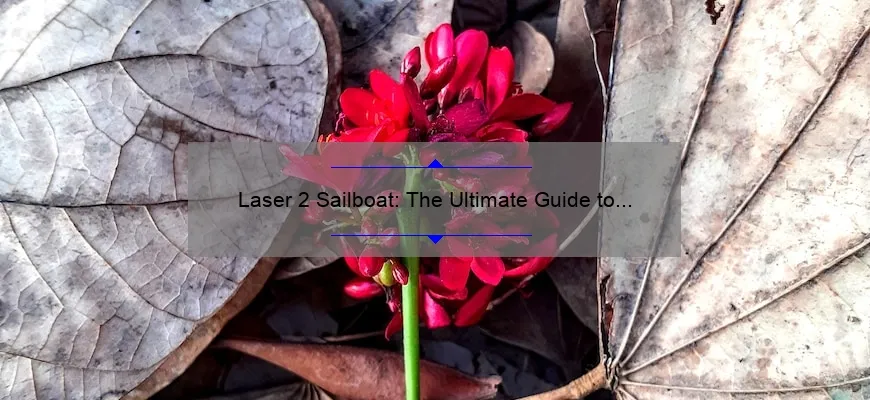
Short answer laser 2 sailboat:
The Laser 2 sailboat is a high-performance sailing dinghy designed for racing and recreational sailing. It features a single trapeze, a mainsail, and a jib, providing exciting and responsive sailing experiences. Its hull is made from fiberglass, making it durable and lightweight.
Introduction to the Laser 2 Sailboat: Experience the Thrill of Sailing with this Classic Vessel
Have you ever dreamed of harnessing the power of the wind and gliding across the open waters? If so, then the Laser 2 Sailboat is just what you need to make those dreams a reality. With its sleek design, nimble handling, and unparalleled performance, this classic vessel has been a favorite among sailing enthusiasts for decades.
The Laser 2 Sailboat is renowned for its ability to thrill both beginners and experienced sailors alike. Whether you’re looking to learn the ropes or test your skills in competitive racing, this versatile boat is up to the task. Its simple rigging system and responsive controls make it easy to handle, even for novices. And with its durable construction and steady buoyancy, it can withstand any conditions Mother Nature throws at it.
One of the most captivating aspects of the Laser 2 Sailboat is its incredible speed. Once you catch a gust of wind in its fully battened sail, you’ll feel an exhilarating rush as you slice through the water like a knife. The combination of its lightweight hull and powerful sail allows for impressive acceleration and top speeds that will leave other boats trailing behind. It’s no wonder why sailors around the world have fallen head over heels in love with this legendary vessel.
But don’t be fooled by its fast-paced nature – the Laser 2 Sailboat also offers plenty of opportunities for leisurely cruising and exploration. Its spacious cockpit can comfortably accommodate two or three people, making it perfect for adventurous outings with friends or family members. Take a lazy afternoon sail along picturesque coastlines or navigate tranquil lakes while enjoying breathtaking views – there’s no limit to where this magnificent vessel can take you.
What truly sets apart the Laser 2 Sailboat from other sailboats is its community. Joining fellow sailors who share your passion for adventure and camaraderie makes every sailing experience all the more enjoyable. Connect with experienced professionals who can offer valuable tips on technique, equipment, and maintenance. Engage in spirited discussions about your latest sailing adventures or upcoming regattas. With the Laser 2 Sailboat, you’ll become part of a tight-knit group that spans the globe, bound together by a love for this remarkable vessel.
So, if you’re ready to embark on an unforgettable sailing journey, look no further than the Laser 2 Sailboat. Experience the sheer thrill of harnessing the power of wind with its unmatched performance and speed. Immerse yourself in a vibrant community of like-minded sailors who will inspire and support you along the way. Get ready to create memories that will last a lifetime – because once you’ve experienced sailing with this classic vessel, there’s no turning back.
How to Master the Art of Sailing a Laser 2 Sailboat: A Step-by-Step Guide for Beginners
Sailing is an ancient art that has captivated humans for centuries, invoking a sense of freedom, adventure, and pure bliss. If you’ve ever daydreamed about gliding effortlessly across the water with the wind in your hair, then learning how to sail a Laser 2 sailboat might be the perfect endeavor for you. In this step-by-step guide tailored specifically for beginners, we will explore the intricacies of sailing a Laser 2 and offer tips to help you master this exhilarating hobby.
Step 1: Understanding the Basics Before setting foot on a Laser 2 sailboat, it’s crucial to grasp the fundamental concepts of sailing. Familiarize yourself with key terms such as “tacking” (changing direction against the wind), “jibing” (changing direction with the wind behind you), and “points of sail” (different angles at which a boat can travel relative to the wind). Learning these essentials will serve as your foundation in becoming a skilled sailor.
Step 2: Preparing Your Laser 2 Sailboat Once you’ve familiarized yourself with sailing’s terminology, it’s time to prep your vessel. Ensure that all necessary equipment is on board and properly functioning- from ropes and rigging to sails and rudders. A well-maintained boat guarantees a smoother sail and contributes significantly to overall performance.
Step 3: Rigging Your Boat Rigging refers to setting up your boat, including attaching sails and rigging ropes correctly. This process can seem daunting at first but fear not! It becomes second nature with practice. Pay close attention to maintaining proper tension in your rigging lines – too loose or too tight can impact maneuverability considerably.
Step 4: Launching Your Laser 2 Sailboat You’re now ready for launch! Identify a safe location with suitable access points for entering the water; preferable areas would have few obstructions like rocks or shallow waters. Be mindful of wind conditions and direction before venturing out to ensure a more enjoyable experience – light to moderate winds are ideal for beginners.
Step 5: Safety First Never underestimate the importance of safety during any sailing activity. Before setting sail, equip yourself with a personal flotation device (PFD) and ensure everyone on board does the same. Also, be aware of weather forecasts and water currents that can affect your journey. Remember, wise sailors prioritize safety above all else.
Step 6: Balancing Act Mastering balance is vital when sailing a Laser 2 sailboat as shifts in body weight greatly impact agility and speed. Finding your center of gravity as you maneuver, particularly during turns or gusts of wind, will optimize your boat’s performance. Train your mind and body to anticipate these changes; it is both an art and a science.
Step 7: Navigating the Wind Understanding the nuances of wind direction is key to becoming an accomplished sailor. Study how sails behave when catching the wind at different angles, known as points of sail mentioned earlier. Adjusting the angle between the sail’s edge and the wind will allow you to harness its power efficiently while simultaneously controlling your course.
Step 8: Mastering Tacking and Jibing Now comes the exciting part – changing directions! Tacking refers to turning into the wind by bringing the bow through it; jibing involves turning away from the wind with it behind you. These maneuvers require practice, timing, and coordination between crew members (if applicable). As you become more proficient in tacking and jibing smoothly, you’ll experience newfound confidence in maneuverability.
Step 9: Advanced Skills & Techniques Congratulations! You’ve grasped the basics and are now ready to delve into more advanced techniques such as fine-tuning sail trim (adjustment), mastering upwind sailing angles, or even attempting tricks like planing (sailing at high speed with hull lifting out of the water). These skills come with time and experience, so continue pushing your boundaries as you evolve in your sailing journey.
Step 10: Continued Learning Sailing is an art that can never be fully mastered. The beauty lies in continuous learning, honing your skills, and embracing new challenges. Join sailing clubs or communities to exchange knowledge and experiences with fellow enthusiasts. Embrace the lifelong process of understanding wind patterns, experimenting with sail configurations, and exploring different bodies of water. Be open to new discoveries!
In conclusion, mastering the art of sailing a Laser 2 sailboat requires patience, dedication, and enthusiasm. With this step-by-step guide for beginners as your compass, set sail on a transformative journey that will unlock a world of adventure and sheer joy out on the open waters. Let the wind carry you toward newfound horizons as you become one with nature through the sport of sailing!
Frequently Asked Questions About the Laser 2 Sailboat: Everything You Need to Know
Title: Frequently Asked Questions About the Laser 2 Sailboat: Everything You Need to Know
Introduction: Ahoy, sailing enthusiasts! Whether you are new to sailing or a seasoned sailor, one boat that has undoubtedly caught your attention is the Laser 2 Sailboat. In this comprehensive guide, we will address some of the most commonly asked questions about this remarkable vessel. So grab your captain’s hat, secure your lifejacket, and let’s set sail into the world of the Laser 2!
1. What Makes the Laser 2 Sailboat So Special? The Laser 2 Sailboat stands out for its versatility and high-performance capabilities in both cruising and racing scenarios. The boat features an innovative design that combines speed and stability like no other. Its two-man configuration allows for collaboration between sailors while maneuvering through varied wind conditions, making it truly unique among its counterparts.
2. How Does It Differ from Other Sailboats? While there are many sailboats on the market, the Laser 2 sets itself apart through its adaptability. This vessel can be equipped with various rigging options according to your skill level or desired sailing style. From a single-sail setup for beginners to twin-trapeze configurations for advanced racers seeking an adrenaline rush – there is something for everyone!
3. Is It Beginner-Friendly? Absolutely! The Laser 2 caters to sailors of all expertise levels. Novice sailors can embark on their nautical adventures with confidence due to its forgiving nature and stable hull design. With accessible controls and simplified rigging systems, those new to sailing will find it easy to learn the ropes while still experiencing thrilling moments on the water.
4. How Do Its Racing Capabilities Compare with Other Boats? For competitive spirits hungry for victories on race day, the Laser 2 won’t disappoint! Its lightweight hull allows for quick acceleration, ensuring you consistently remain at the forefront of races against competitors. The boat’s maneuverability and responsive controls allows for quick adjustments, making it a fierce contender even in highly competitive fleets.
5. Can It Be Sailed Single-Handed? Yes, it can! Though designed as a two-person sailboat, the Laser 2 can be sailed solo by experienced sailors who prefer going solo or need some solitude on the water. With appropriate modifications and adjustments to the rigging systems, it is possible to enjoy the Laser 2 experience single-handedly.
6. What Type of Maintenance Does the Laser 2 Sailboat Require? The Laser 2 is known for its durability and low-maintenance requirements. Its robust construction ensures longevity, while simple systems make maintenance tasks hassle-free. Regular cleaning after each sail and occasional inspections of rigging components should suffice to keep your Laser 2 in top-notch condition for years of enjoyment.
7. Where Can I Find Spare Parts or Accessories? Fear not, fellow mariner! The Laser 2 community is strong, with passionate enthusiasts regularly sharing tips, tricks, and information about spare parts or accessories. Numerous online retailers specialize in providing genuine Laser 2 components to ensure you find exactly what you need with ease.
Conclusion: Now that we have delved into the world of frequently asked questions about the remarkable Laser 2 Sailboat, you are equipped with vital knowledge that will help you set sail confidently upon its sleek hull. Whether you’re seeking casual cruising adventures or craving exhilarating races, this versatile vessel has got your back covered. So cast off from land and embark on unforgettable aquatic expeditions aboard the magnificent Laser 2 – where thrill meets tranquility!
Exploring the Design and Features of the Laser 2 Sailboat: What Sets It Apart?
Introduction:
The Laser 2 sailboat is not your ordinary watercraft. It is a remarkable fusion of design, engineering, and ergonomics that sets it apart from other sailboats in the market. In this blog post, we will dive into the intricacies of its design and explore the array of features that make the Laser 2 a true standout.
1. Lightweight Construction:
One striking feature of the Laser 2 sailboat is its lightweight construction. Meticulously crafted using advanced materials and innovative manufacturing techniques, every component is designed to reduce weight without compromising on strength. This means increased durability while allowing for swift and nimble sailing performance.
2. High-performance Hull Design:
At the heart of the Laser 2’s exceptional functionality lies its masterfully designed hull. Utilizing extensive research and cutting-edge hydrodynamics, this boat glides through water with minimal resistance, maximizing both speed and maneuverability. Its sleek lines seamlessly integrate form with function, making it a sight to behold as it effortlessly slices through waves.
3. Three-sail Configuration:
Unlike conventional sailboats sporting a single or double-sail setup, the Laser 2 boasts a unique three-sail configuration that takes sailing to a whole new level. Consisting of a main sail, jib, and spinnaker, this trifecta offers enhanced control over various wind conditions. Whether you’re gracefully cruising along or chasing adrenaline-fueled speeds, this versatile setup ensures an exhilarating experience for sailors of all skill levels.
4. Ergonomic Cockpit Design:
The Laser 2’s cockpit design strikes an exquisite balance between comfort and functionality. The ergonomically contoured seating positions allow sailors to maintain optimal control while minimizing strain during long journeys or intense racing competitions. Every touchpoint has been meticulously engineered to keep sailors in harmony with their vessel – leading to enhanced responsiveness and precision handling on the water.
5. Rigging Simplicity:
Tying knots and setting up a sailboat can be a daunting task for newcomers. However, the Laser 2 eliminates this complexity by incorporating an intuitive rigging system. With numbered lines and user-friendly adjustments, even novice sailors can quickly learn to set up and fine-tune their sails. By reducing hassle and ensuring ease of use, the Laser 2 empowers sailors to focus on what truly matters – sailing itself.
6. Durability that Stands the Test of Time:
Investing in any watercraft is a significant decision — one that requires assurance of its longevity. The Laser 2’s robust construction ensures it stands the test of time, with high-quality materials and meticulous craftsmanship providing unmatched durability. This means you can confidently embark on countless adventures without worrying about wear and tear impacting your vessel’s performance or structural integrity.
Conclusion:
In conclusion, the Laser 2 sailboat undoubtedly surpasses expectations when it comes to design and features. Its lightweight construction, high-performance hull design, three-sail configuration, ergonomic cockpit, rigging simplicity, and durable build make it shine amidst a sea of ordinary sailboats. Whether you’re an experienced sailor seeking exhilarating thrill rides or a beginner looking to enter the world of sailing, the Laser 2 sets itself apart as a sophisticated watercraft that guarantees unforgettable experiences on every voyage.
Safety Tips and Precautions for Sailing a Laser 2 Sailboat: Enjoying Your Adventure Responsibly
Sailing a Laser 2 Sailboat can be an exhilarating experience, allowing you to explore the open waters and enjoy the serenity of the sea. However, just like any other water sport, it’s crucial to prioritize safety and take necessary precautions to ensure an enjoyable adventure. In this blog post, we will provide you with detailed professional advice on how to safely navigate your Laser 2 Sailboat while still having a witty and clever time!
1. Mind the Weather Forecast: Before setting sail, always check the weather forecast thoroughly. Wind speed, direction, and potential storms are critical factors that can greatly influence your sailing experience. While it may seem exciting to challenge yourself in rough conditions or strong winds, it’s essential to understand your abilities and limitations as a sailor. Remember, responsible sailors don’t disregard signs of inclement weather – they adjust their plans accordingly.
2. Get Comfortable with Your Boat: Knowing your boat inside out is paramount for safe sailing adventures. Take the time to familiarize yourself with every aspect of your Laser 2 Sailboat – from its rigging and sails to its navigation instruments and safety equipment. A witty sailor knows their boat intimately; better understanding ensures you’re prepared for any situation that comes your way.
3. Safety Equipment Should Be Your Best Friend: Never set sail without properly equipped safety gear! Life jackets are at the top of the list – make sure you have enough for each crew member aboard your Laser 2 Sailboat. Additionally, carry flares or alternative signaling devices in case you need help in an emergency situation — cleverly choose colorful flares that match your vibrant personality!
4. Communicate Effectively: Before embarking on your sailing journey, let someone else know about your plans. Share details including departure time, estimated return time, planned route (if applicable), and emergency contact information. Keeping friends or family informed allows them to keep an eye out for your well-being from the shore, and they’ll appreciate your responsible approach to adventuring.
5. Buddy System: Sailing is more enjoyable when you have company. Not only does sailing with a partner enhance your overall experience, but it also enhances safety. In case of an injury or other unforeseen circumstances, having a buddy on board ensures that there’s always someone available to assist or seek help if needed — plus, you can share witty banter during those long stretches of calm waters!
6. Keep Your Phone Dry: While it may seem obvious, we cannot stress enough how important it is to keep your phone protected from water damage. We live in a world where being connected is essential – not just for capturing clever Instagram stories but also for emergencies. Today’s smartphones are often equipped with waterproof or resistant features; however, carrying them in a proper waterproof case will provide an extra layer of protection – just in case things get too wet and wild!
7. Education is Key: Investing time in expanding your sailing knowledge through courses and certifications will undoubtedly make you a safer sailor. Understanding navigation rules, reading charts or maps, and knowing how to react in different boating situations are invaluable skills that come with education and training. Being professionally skilled while exhibiting a clever wit ensures admiration from fellow sailors!
8. Respect Nature: Finally, always respect the environment around you when sailing your Laser 2 Sailboat. Avoid littering, decrease noise pollution as much as possible (we know it can be difficult when celebrating witty victories on the high seas!), and follow guidelines for responsible anchoring practices.
In conclusion, enjoying sailing adventures responsibly means putting safety first while injecting some wit and charm into every voyage aboard your Laser 2 Sailboat! By following these tips and precautions diligently, you can confidently navigate the open waters while having fun, ensuring your adventure is memorable for all the right reasons. Happy sailing and stay cleverly safe!
Unleashing Your Competitiveness: Racing Techniques and Strategies in a Laser 2 Sailboat
Introduction: Sailing is a sport that has captured the hearts of adventurers and thrill-seekers since time immemorial. The sense of freedom, mastery over nature, and the adrenaline rush offered by sailing are unparalleled. Amongst all the sailboat classes out there, the Laser 2 is renowned for its exhilarating speed, maneuverability, and versatility. Whether you’re an experienced sailor or a novice looking to dive into competitive racing, this blog post will guide you through some ingenious techniques and strategies to unleash your competitiveness in a Laser 2 sailboat.
1. Mastering Boat Handling: A vital aspect of successful racing in a Laser 2 is mastering boat handling skills. This includes understanding how to efficiently maneuver your vessel through various wind conditions, waves, and currents. Being able to extract maximum speed from your sailboat while maintaining control requires finesse. Practice tacking (turning the bow of the boat through the wind) and jibing (turning the stern through the wind) until these maneuvers become second nature.
2. Effectively Using Sail Controls: Sail controls play a crucial role in optimizing your overall performance on water. Familiarize yourself with the main controls available on a Laser 2: mainsheet, traveler, vang/kicker, cunningham/downhaul, and outhaul; each has its own purpose in fine-tuning your sails’ shape and power efficiency. Understanding how to trim your sails using these controls can make a significant difference in speed and responsiveness.
3. Tactical Decision-Making: Racing involves not just raw sailing skills but also strategic decision-making on the racecourse. Analyze wind shifts meticulously to anticipate changes before they occur and position yourself advantageously on the course accordingly. Keep an eye on other competitors’ tactics as well; learn from their successes but also be ready to adapt and counter their moves. Sail smart, exploiting any tactical opportunity that arises to gain an edge over your rivals.
4. Teamwork: For those participating in two-person or three-person Laser 2 racing, effective teamwork is paramount. Communication between teammates on boat handling, sail setting adjustments, and tactical decisions need to be smooth and seamless. A synchronized effort between the helmsman and crew can make the difference between a win and a loss. Develop trust with your team members, learn each other’s strengths and weaknesses, and work in tandem towards a common goal.
5. Physical Fitness: Sailing may not seem like an intense physical activity at first glance, but maintaining optimal fitness levels is vital for competitive success in a Laser 2 sailboat race. Cardiovascular endurance helps you sustain high energy levels throughout demanding races, while strength training allows you to handle the boat’s forces efficiently during maneuvers. Core stability exercises are indispensable for maintaining balance on trapezing boats like the Laser 2.
Conclusion: Unleashing your competitiveness in a Laser 2 sailboat is a journey that combines technical mastery of boat handling, strategic decision-making, effective teamwork, and physical fitness. Investing time in honing these skills will undoubtedly elevate your racing game to new heights of excellence. So embrace the thrill of competition, embrace the adventure that comes with sailing a Laser 2, and prepare to unleash your full potential as you conquer the waves with style!
Recent Posts

- Sailboat Gear and Equipment
- Sailboat Lifestyle
- Sailboat Maintenance
- Sailboat Racing
- Sailboat Tips and Tricks
- Sailboat Types
- Sailing Adventures
- Sailing Destinations
- Sailing Safety
- Sailing Techniques
LASER 2 Detailed Review
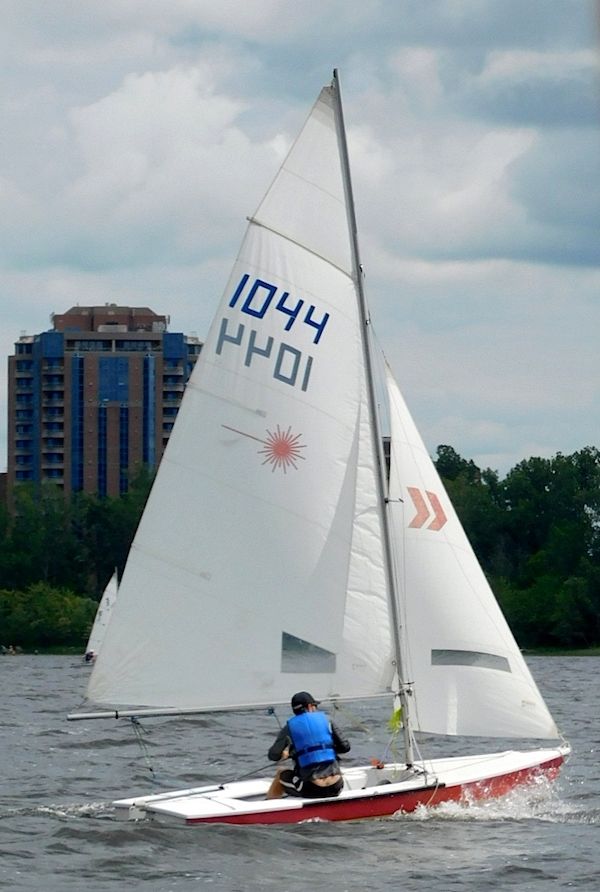
If you are a boat enthusiast looking to get more information on specs, built, make, etc. of different boats, then here is a complete review of LASER 2. Built by Performance Sailcraft and designed by Bethwaite Design, the boat was first built in 1978. It has a hull type of Dbrd. Dinghy and LOA is 4.4. Its sail area/displacement ratio 64.69. Its auxiliary power tank, manufactured by undefined, runs on undefined.
LASER 2 has retained its value as a result of superior building, a solid reputation, and a devoted owner base. Read on to find out more about LASER 2 and decide if it is a fit for your boating needs.
Boat Information
Boat specifications, sail boat calculation, contributions, who designed the laser 2.
LASER 2 was designed by Bethwaite Design.
Who builds LASER 2?
LASER 2 is built by Performance Sailcraft.
When was LASER 2 first built?
LASER 2 was first built in 1978.
How long is LASER 2?
LASER 2 is 4.22 m in length.
Member Boats at HarborMoor
- Sign In or Register
- Boats for Sale
- Research Boats
- Sell a Boat
- Search Alerts
- My Listings
- Account Settings
- Dealer Advertising
- Laser 2 Sailboat
Laser 2 Sailboat Boats for sale
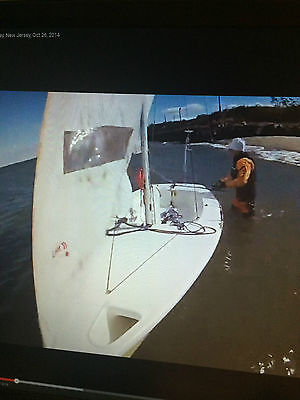
Laser 2 Sailboat with Spinnaker
Highlands, New Jersey
Posted Over 1 Month
Up for sale is a great condition Laser 2 with Spinnaker for sale. The pictures are a little grainy as they are still pictures from the a go-pro video i made last summer sailing her. Notice the built in spinnaker tube infront of the mast. Very rare, only the newest Laser 2's have these, they are getting harder and harder to fine. I have all necessary equipment for the spinnaker (pole and sail). Spinnaker sail is old, but serviceable. Comes with everything needed to sail, including spin pole and spinnaker sail. this boat is ready to rock and roll! this baby is ready to rock! just add wind and water! No trailer. Boat is located in Port Monmouth, NJ (Zip 07758). i can show you how to step the mast when you pick up, its very easy. great boat for newbies as well as advanced sailors. sail boat sailboat laser 2 hobie cat german shepherd
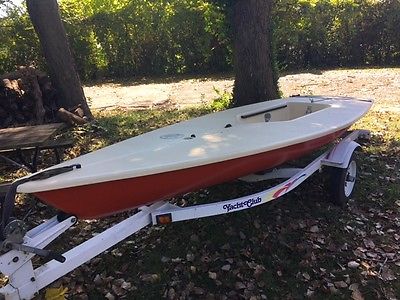
Laser Sailboat with Trailer / Ready to sail today / trailer has new tires
Kansas City, Missouri
Length 14.0
No longer race-ready, but still tons of fun. this much loved Laser, is ready for a new home. She's been cleaned up and is ready to sail as soon as you put her in the water. She comes with 2 piece mast and boom, Rudder with tiller extension, keel, one sail with battens, sail and spar bags, and a trailer that is road ready. This is the perfect boat for teaching your kids to sail. Easy for one person to launch and rig, even without a launch ramp. She's fast and snappy enough for even an experienced sailor to handle. Guaranteed that after a day sailing her, your face will hurt from smiling so much! Located in Kansas City, Mo 64116 Call Bill for info 816-916-9031

1974 Laser Sailboat with 1999 Trail-Rite Seitech two boat trailer
Santa Barbara, California
Model Standard
Category Dinghies
Length 13.8
1976 Laser Standard - older classic laser with wooden blades, all rigging, 2 sails (1 new practice sail and 1 blown out race sail), water tight inspection port with bag, hiking strap, ratcheting main block ready to sail! Very fun to sail and often get comments on the classic wooden blades. 1999 Trail-Rite galvanized trailer with Seitech two-boat rack, great condition, lightly used, Buddy Axle Bearings, current permanent California trailer registration. The Seitech rack alone is $958, a ready to roll trailer is $1975 - see the similar trailer picture in our listing - so pick up our boat and trailer for less than the trailer alone. Approx 14' l x 5' w, 315lbs, 2" trailer ball. Located in Santa Barbara, California. Local Pickup only. $250 Deposit Required on Buy It Now or Accepted Best Offer. Buyer to pickup within 14 days of Buy It Now or Accepted Best Offer. Thanks for looking!

12' Skipper Sailboat with Trailer
Sharpsburg, Georgia
Make Skipper
12' Skipper Sailboat with Trailer. Boat comes complete with Jib, Main Sail, Rudder, and Daggerboard. Boat also has a motor mount for outboard/trolling motor. Boat is in good condition. Trailer is a Venture Trailer and is in excellent shape. Very roomy for a 12', fits 3 adults and is a great way to learn how to sail. Skipper's are made in England and are hard to find in the States. Hull has (2) spots where the fiberglass has been repaired, but it is water tight. Located 30 min South of Atlanta $950 Cash. Call or Text 404-788-1026.Sunfish, sail boat, dinghy, laser, optimist, snark.
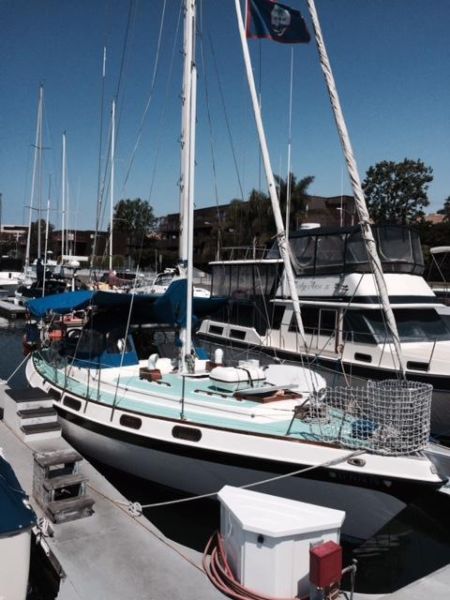
Morgan out island 41' cutter sailboat
Venice, California
1974 Morgan out island 41 sloop/cutter. Designed for Bahamas charter, this full keel, heavy displacement, shallow draft boat is perfect for liveaboard cruising. Very roomy, stable, and sea kind, the Morgan OI41 is a joy to sail - both coastal and offshore. She points comparatively well with her cutter rig, and is extremely stable - tracking like a train. Come take her for a sea-trail, you'll see... I am the third owner of this beautiful yacht. It was ordered custom from the factory for the original owner with every available option. Walk-through. Teak cockpit accents, toe-rail, and handholds. Solid cruiser. She has been across the Pacific twice, and through the Panama Canal three times. 320gal water and 140gal diesel capacity. Recent refit to prepare for another extended cruise, but owner's plans have changed. Everything comes with the boat; spares, 100's of feet of extra line, blocks, rigging, nuts, bolts, filters, 2 spare alternators, gusher manual pump, hoses, fuel filters, oil filters, racor filters, perkins parts, bosun's chair, ditch bag, life raft, fishing poles, propane, 140gal diesel, tools, laser thermometer, galley foot pump, fiberglass repair tools, batteries, anchor balls, bimini, MOB strobe, more, too much to list. Everything I've done to this boat has been done to the highest standard, no short-cuts or shoddy workmanship. I spared no expense to do it correctly. That's something you won't find on 90% of boats you'll look at. Come see for yourself. email for full specs
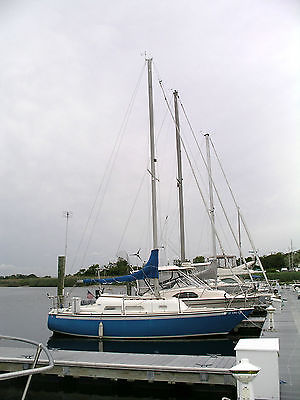
27' O'Day sloop - moving away from ocean - must sell soon :(
New York, New York
Make O'Day
Model Sloop
Category Cruiser Boats
Aquarius is easy to single hand, is great for day sailing yet sleeps five to six in four bunks (two in the fore-peak, one to two amidships, one on either side of the engine bay that has drop down sides for engine access). She's great for either a beginner or a seasoned sailor. O'Days are very popular, often raced, and there are several internet sites with information, forums and and offering of parts. I've had the pleasure of owning Aquarius for ten years now and I love her. We're relocating and after much procrastinating I realize that the ocean will just be too far way. The previous owners had her in Oyster Bay NY for many years. She is surprisingly fast yet very stable (2,230 lb lead keel) - although not suggested, we've powered through 6'-8' seas with her. She sails very close to the wind, is roomy with loads of storage, and you can stretch out on the 6'-6" cockpit seats with custom cushions (both with lockers beneath) or seat several. There's approximately 6' headroom. She has a 30 horse power Universal Atomic Four engine whereas most boats her size have either 9.9 HP outboards (which cavitate in lumpy water) or 7 to 13 HP diesels. She starts fast, runs clean. Uses about a gallon an hour. These are so popular that new parts are still made for it - even an optional hand crank! Here's one major source of new parts, service and info: moyermarine.com. She has a new jacket side plate from Moyer Marine. There's incredibly easy access to the engine from both sides and the front. There's even an engine "room" light. She has the original 12 gallon main gas tank along with the then optional 6 gallon plastic auxiliary tank (located on a shelf in the port side locker). Aquarius was made just before the cost of oil, gas and related resins sky-rocketed and caused many boat companies to skimp on construction and then to go out of business. Her hull is solid fiberglass - no balsa to worry about, and is about 3/8" thick. The prop is bronze. The prop shaft is bronze with a recent sacrificial zinc. I consider her the best year - 1975 had the best interior layout and has a lead ballasted fin keel with skeg mounted rudder (offering some protection to it). She has a 4' draft and nice freeboard which allows for usually dry sailing and calm guests.. My son worked at West Marine during school which gave us great discounts - she has new lifelines, new lazy jacks on the main boom, new main-sheet, new bronze thru-hull valves and Y-valve for the macerator toilet, new VHF radio, solar powered charger to keep her batteries charged between use, original Loran C, new coil and ignition parts, new water pump impeller, new engine exhaust pipe to the water muffler, new rubber diaphragm on her bilge pump, a cockpit tent in almost new shape, recent 12 volt receptacle, dual batteries with selector and gauge, tiller steering with nice looking new laminated wood tiller, old auto tiller, dual cockpit scuppers, cockpit cushions, anchor, teak and stainless steel swim ladder between the split stainless steel rear pulpit, auto-tiller, loads of storage, two sinks, cabin lights, electric macerator toilet between the fore peak and the main cabin with folding teak doors for privacy, curtains, cabin inclinometer, hanging locker, cockpit "table" (portable, that spans across the seats), storage under all the berths, a 12v hand vacuum, carpeting, a large ice box under a lid in the counter that drains to outside, alcohol stove plus a propane grill that attaches to hang off of the stern. There's a GPS/Depth sounder along with the original one that still works by a light revolving within its face and is entertaining to watch. There's roller furling, a wind vane and radio aerial atop the mast, stainless bow pulpit, a boom vang, a whisker pole for downwind sailing, genoa in reasonable shape, two jibs (one is older and a bit soiled), two mainsails (one also is older and a bit soiled). Two new stainless fishing rod holders, I've several life jackets, am/fm/cd stereo, full safety equipment including fire extinguishers, radar reflector ball, first aide kit, floodlight, Lifesling overboard rescue system, a flare gun, horn, boat hook etc. I can throw in a new medium sized dog life jacket if the buyer needs it. The upholstery is in very good condition. Loads of interior teak in good condition. The former owner gave us the original set of plastic dishes, silverware and ice tongs, and I'll give them to the new owner so they can stay with the boat. What I'm aware of: minor scars from dock battles etc, and a couple of soft deck spots which I was planning on repairing this season. The hardware & connections to the hull have been resealed over the years and should be checked. We had a problem with gunk in the main tank so we had it drained and we were planning on replacing it. We've been running off of the 6 gallon tank which has given us more than enough range. The sink hand pumps aren't working but I've a new electric pump to pressurize the system waiting to be installed (Whale offers refurbishment kits if you'd rather hand pump). The hatch boards are ready for replacement, last year there was minor weeping at the toilet - it may need tightening or a new gasket, and there's some minor rust here and there on the engine. Very little rain water weeps in from the ports - I do a yearly sealing but this year haven't gotten to it yet. She's a pretty dry boat. Aquarius has loads of spare parts including a new small holding tank for the toilet, new deck hardware along with a good-sized used winch for the cabin top to make single handling even easier, new electric water pump to pressurize the water system, new electric bilge pump - all ready to be installed. Obviously I love the boat - we weren't planning on moving from Brooklyn but the house that we've bought was an amazing deal in a historic small town and we realized that's where we want to semi-retire. She's out of the water in Gateway Marina (opposite Floyd Bennett Field) in Brooklyn open to the bay and to the ocean. The marina owes us a launch but it seemed to make sense to allow prospective buyers a look at her bottom. Here's more info: oday.sailboatowners.com, odayowners.com and iheartodays.com/model_oday_27 There was an ad in Craigslist for her but it was put in without my knowledge by a marina service employee. It was taken off. The boat is sold as is, and will need to be picked up or sailed from her location in Gateway Marina, Brooklyn, NY by the new owner. Storage and shipping arrangements are the responsibility of the purchaser. You may see the boat by appointment. She is fairly priced - serious offers only please. Thank you for looking. single handling, Pearson, Catalina, sloop, beginner boat, inexpensive sailboat, C&C, Hunter, Tartan, Morgan, Cal, Beneteau, Columbia, Macgregor, Irwin, Alberg, Vanguard, Islander, San Juan, Lightning, S2, Cape Dory, Hobie, Seidelmann, Tanzer, Island Packet, Herreshoff, Newport, West Wight Potter, Sunfish, Gulfstar, Laser, Ericson, Santana, Westerly, classic plastic, Contessa, stable, solid, best sailboat, day-sailer, daysailer, open water sailing, safe, high freeboard, cruiser, masthead sloop, dinghy, racer, catamaran, trimaran, diesel, sail, boat, fiberglass, awesome boat, catboat, rowboat, cheap sailboat, tender, anchor, coastal cruiser, Gulf, Bombay Clipper, Island Packet, Westerly, inboard, Universal, Universal Atomic Four, bronze prop and shaft, Nonsuch
Narrow Results
Current search reset all.
- Keyword: laser 2 sailboat
- Skipper (1)
- Cruiser Boats (1)
- Dinghies (1)
- California (2)
- Georgia (1)
- Missouri (1)
- New Jersey (1)
- New York (1)
- Search Title Only
- Has Picture
- Include Sold Listings
Showcase Ads

2016 Hurricane Boats 231 CC

1988 Ocean Master 27’ Center Console
Portland, ME

2016 Sea Fox 186 Commander
Chickasaw, AL

2016 Malibu Wakesetter 22 VLX
Firestone Park, CA

2017 Robalo R222 Center Console
Washington, DC

2003 Four Winns 268 Vista
McIndoe Falls, VT

2006 Scout 280 Vintage
Springfield, MO
Create Alert
Please, name this search
Select Interval
Alert Successfully Created
Free Shipping Over $99* - 366 Day Returns - Dedicated Customer Support

- Call Us +1-503-285-5536
- Sign in & Register
- Recently Viewed
Guide to Laser Sail and Rig Sizes

Over 200,000 Laser sailboats have been built over the last 40 years, more than most other small dinghy sailboats. In this article we are going to answer one of the most common questions we get: What size rig do I have? This will help answer what size sail and/or rig you already have and what size sail and/or rig you need to purchase to update your Laser.
What size rig / sail do I have? Standard vs. Radial vs 4.7 Explained
The Laser sailboat has had a number of different rig sizes, with the intention of making the boat sailable by a wide range of sailors (and different sailor weights) by simply swapping out the lower mast section and sail while keeping all other components the same. There are currently three different rig sizes and they are commonly referred to as 'Standard', 'Radial' and '4.7'. Below you will find an image that shows the three rigs side by side, and in the following section we'll explain each one.

Laser Standard / MK2 / ILCA 7
This is the most common Laser rig size, and the original rig on the boat when it was designed. It features a 7.06 square meter sail (about 76 square feet). In 2018, the Laser Class approved a new 'Standard' sail, which is referred to as the 'MKII' or 'Mark 2' to distinguish it from the first version. The difference, among other things, is in the panels. The original 'Standard' sail featured horizontal cut panels. The new MkII sail has radial cut panels. There is no difference in size between these two versions, and as of 2020 all new Laser Standard sails are available in this updated cut.

How to tell if you have a 'Standard' sail: The first and most obvious way to tell if you have a 'Standard' sail is to look at the panels. If they are horizontal, it is most likely a standard sail. Next, you can measure the luff (the front edge of the sail along the mast sleeve). This measurement should be about 5130 mm or 200 inches from the top of the sail to the bottom.
How to tell if you have a 'Standard' lower mast section: The 'Standard' lower mast section should measure about 2865 mm or 113 inches . It is a fairly stout mast section compared to the two smaller mast sections.
Laser Radial / ILCA 6
Originally called the 'M' rig when first designed, the Laser 'Radial' sail is smaller than the 'Standard' sail at 5.76 square meters (62 square feet). At the time, it was the only Laser sail to feature the radial cut panels, which allowed the sail to be de-powered more easily in bigh winds. Per the notes about the 'Standard' rig above, both the Standard and Radial sail feature the radial cut design. Another typical indicator of a Radial size sail are the blue panels at the tack and clew of the sail.
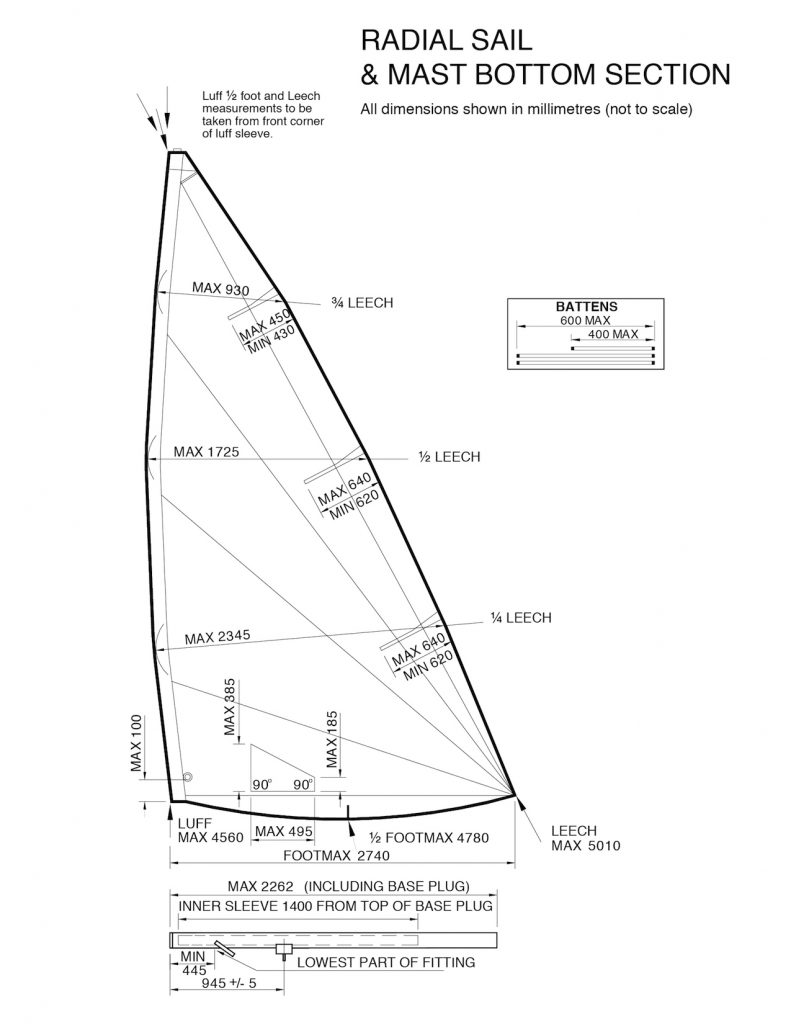
How to tell if you have a 'Radial' sail: The first and most obvious way to tell if you have a 'Standard' sail is to look at the panels. If they are radial, as in emanating out from the center, it is most likely a radial sail. Next, you can measure the luff (the front edge of the sail along the mast sleeve). This measurement should be about 4560 mm or 180 inches from the top of the sail to the bottom.
How to tell if you have a 'Radial' lower mast section: The 'Radial' lower mast section should measure about 2262 mm or 89 inches . It is also a bit smaller in diameter than the standard section.
Laser 4.7 / ILCA 5
The Laser 4.7 (or ILCA 5) is the smallest of the three Laser sails and was designed for young sailors just getting into Laser sailing. The 4.7 lower mast section is also different from the others in that is has a pre-bend near the boom fitting, allowing the sail to depower much easier. This is the least common Laser sail size, and if you have an old one around, chances are it is not a 4.7 sail.

How to tell if you have a '4.7' sail: The 4.7 is similar to the old 'Standard' sail as it has cross cut panels. Many 4.7 sails also have an obvious 4.7 logo somewhere on the cloth. Next, you can measure the luff (the front edge of the sail along the mast sleeve). This measurement should be about 4080 mm or 160 inches from the top of the sail to the bottom.
How to tell if you have a '4.7' lower mast section: The '4.7 lower mast section has a pre-bend in it and should measure about 1810 mm or 71 inches . The bend is the easiest way to tell it apart from the others.

Subscribe To Our Newsletter
Sign up for our newsletter to receive exclusive discounts, new product announcements, and upcoming sales.

The best things in life have only one thing in common:
They are unique…
Laserperformance

OUR COMMITMENT
75% SHARE OF RENEWABLE ENERGY
Eu target: 32% reduction.
CARBON NEUTRALITY WITH ZERO NET GREENHOUSE GAS EMISSIONS
Eu target: 40% reduction, sailing news, sunfish quality report 2023, mediterranean games, sunfish worlds.
- Parts & Accessories
Privacy Overview
- Guided tour
River Cruise on Luxurious Radisson Boat
- Description
- Choose date

Equipped with ice-breaking technology, these huge fancy yachts are the only river cruisers running all year around. The round trip journey takes two and a half hours and floats past all the big sights like the White House, Novodevichy monastery and the Kremlin. There’s a large open air observation deck up top, while the main body of the ship houses a restaurant with a dance floor for a romantic post dinner dance. For a particularly romantic experience take one of the evening boats and admire the bright lights of the city skyline at night.
The most relaxing and picturesque tour that Moscow can offer: a great way to see the city center and its main attractions. This is a perfect alternative to exploring the city by car, if you only have time to do sightseeing during weekday rush hours.
Your English-speaking guide is eager to share every bit of their knowledge about the surrounding landscape, the architecture and historical details.
We conduct Moscow river tour on Radisson Flotilla boats all year around! It’s warm inside during winter months, while there’s air conditioning during hot summer days. You may also treat yourself to drinks, lunch or dinner on board (drinks and food are not included in tour price).
The cost of an excursion with a personal guide for 1 person
Quay at Radisson Collection Hotel
Government Headquarters ("the White House")
Kievsky Railway Central
Novodevichy Convent
Luzhniki Stadium
Academy of Sciences
Monument to Peter I
Cathedral of Christ the Saviour
Moscow Kremlin
St.Basil's Cathedral
Novospassky Monastery
U-turn and back to Quay at Radisson Royal Hotel
Choose your dates
Who's going.
- Excursion River Cruise on Luxurious Radisson Boat
- Date and time:
- Who's going:
See photo of the meeting point
VESSEL REVIEW | Sinichka – Electric commuter boats designed for Russia’s Moskva River
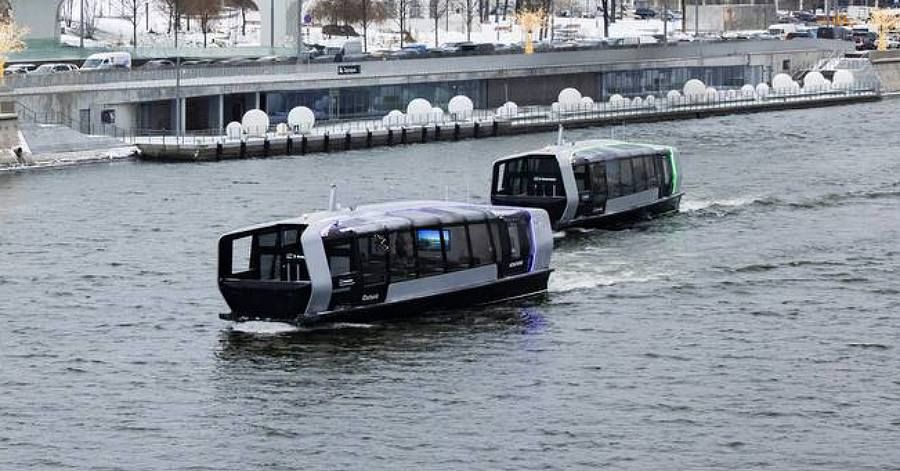
A series of three new electric monohull commuter ferries have already begun operational sailings on the Moskva River in the Russian capital Moscow.
Built by Russian shipyard Emperium, sister vessels Sinichka , Filka , and Presnya – all named after rivers in Moscow – are being operated by the Moscow Department of Transport and Road Infrastructure Development (Moscow Deptrans). They are the first units of a planned fleet of 20 vessels that will serve the capital city and other nearby communities. The new ferry system will be the water transport system to be operated on the Moskva River in 16 years.
Each vessel has a welded aluminium hull, an LOA of 21 metres, a beam of 6.2 metres, a draught of only 1.4 metres, a displacement of 40 tonnes, and capacity for 80 passengers plus two crewmembers. Seating is available for 42 passengers on each ferry, and the main cabins are also fitted with USB charging ports, wifi connectivity, tables, toilets, and space for bicycles and scooters. The cabin layout can be rearranged to allow the operator to adjust the distances between the seats and to install armrests of varying widths.
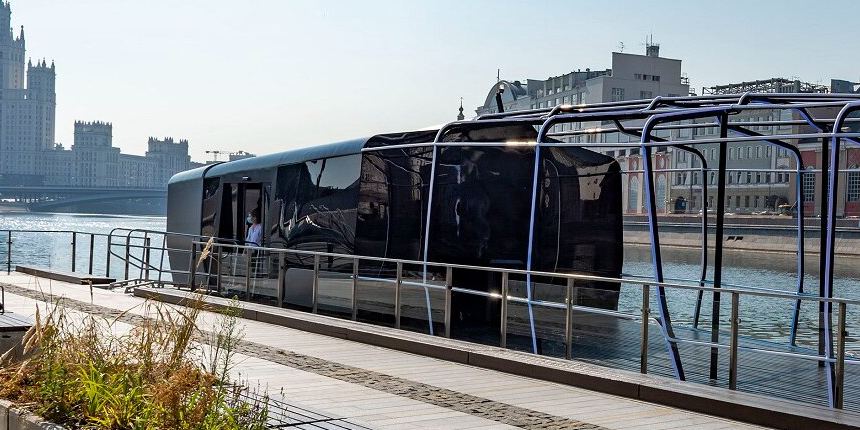
An open upper deck is also accessible to passengers and is the only area on each ferry where smoking is allowed.
The ferries are all of modular construction with each ferry’s wheelhouse, main cabin, and other structural elements being built as complete, separate components. This enables the ferries to be easily dismantled for transport to anywhere in Russia by rail and then quickly re-assembled within seven days.
The ferries are also ice-capable. Recently completed operational trials on the Moskva showed that the vessels can also easily navigate under mild winter conditions with broken surface ice, though year-round operations are planned for the entire fleet.
The ferries are each fitted with 500kWh lithium iron phosphate battery packs that supply power to two 134kW motors. This configuration can deliver a maximum speed of 11.8 knots, a cruising speed of just under 10 knots, and a range of 150 kilometres.
Emperium said the transfer of rotation of electric motors to the propeller is carried out by direct drive. As a propulsion installation, a pulling rotary propeller-steering column with double screws is used. The installation of double pulling screws, with similar power, allows an operator to increase the efficiency of the propulsion system to deliver a slightly higher speed or to reduce energy consumption. This arrangement also provides the ferries with enhanced manoeuvrability necessary for navigating in close quarters.
The batteries themselves have projected service lives of 10 to 12 years and are fitted with safety features such as built-in fire extinguishers and gas vents. Quick-disconnect features allow the batteries to be easily removed for replacement or maintenance.
Some of our readers have expressed disquiet at our publication of reviews and articles describing new vessels from Russia. We at Baird Maritime can understand and sympathise with those views. However, despite the behaviour of the country’s leaders, we believe that the maritime world needs to learn of the latest developments in vessel design and construction there.
Click here to read other news stories, features, opinion articles, and vessel reviews as part of this month’s Passenger Vessel Week.
Related Posts

Baird Maritime
Tags: Emperium Filka Moscow Moscow Department of Transport and Road Infrastructure Development Moskva River Presnya Russia Sinichka WBW newbuild
- Previous VESSEL REVIEW | Ferry Rokko – Second 194m Ro-Pax for Miyazaki Car Ferry
- Next Brighton man to be charged for illegal abalone haul

Baird Maritime , launched in 1978, is one of the world's premier maritime publishing houses.
The company produces the leading maritime new portal BairdMaritime.com , home of the world famous Work Boat World, Fishing Boat World, Ship World, Ausmarine, and Commercial Mariner sub-sites, and the industry-leading ship brokerage platforms WorkBoatWorld.com and ShipWorld.com .
Contact us: [email protected]
© Copyright - Baird Maritime
- Terms & Conditions
- Advertise with Baird Maritime
- Submit News/Leads

- Bahasa Indonesia
- Slovenščina
- Science & Tech
- Russian Kitchen
Check out Moscow’s NEW electric river trams (PHOTOS)
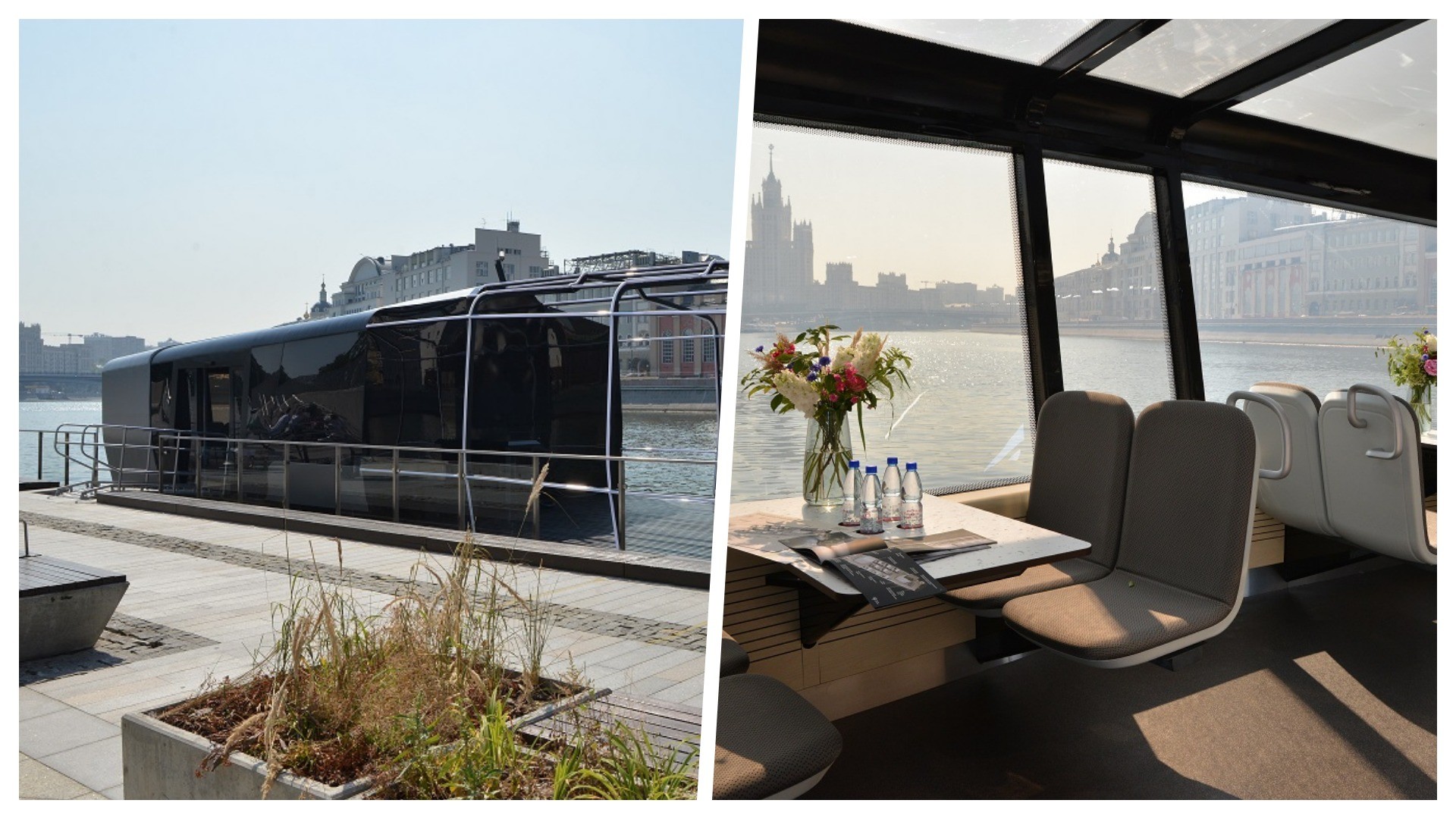
Water transportation has become another sector for the eco-friendly improvements the Moscow government is implementing. And it means business. On July 15, 2021, on the dock of Moscow’s ‘Zaryadye’ park, mayor Sergey Sobyanin was shown the first model of the upcoming river cruise boat.
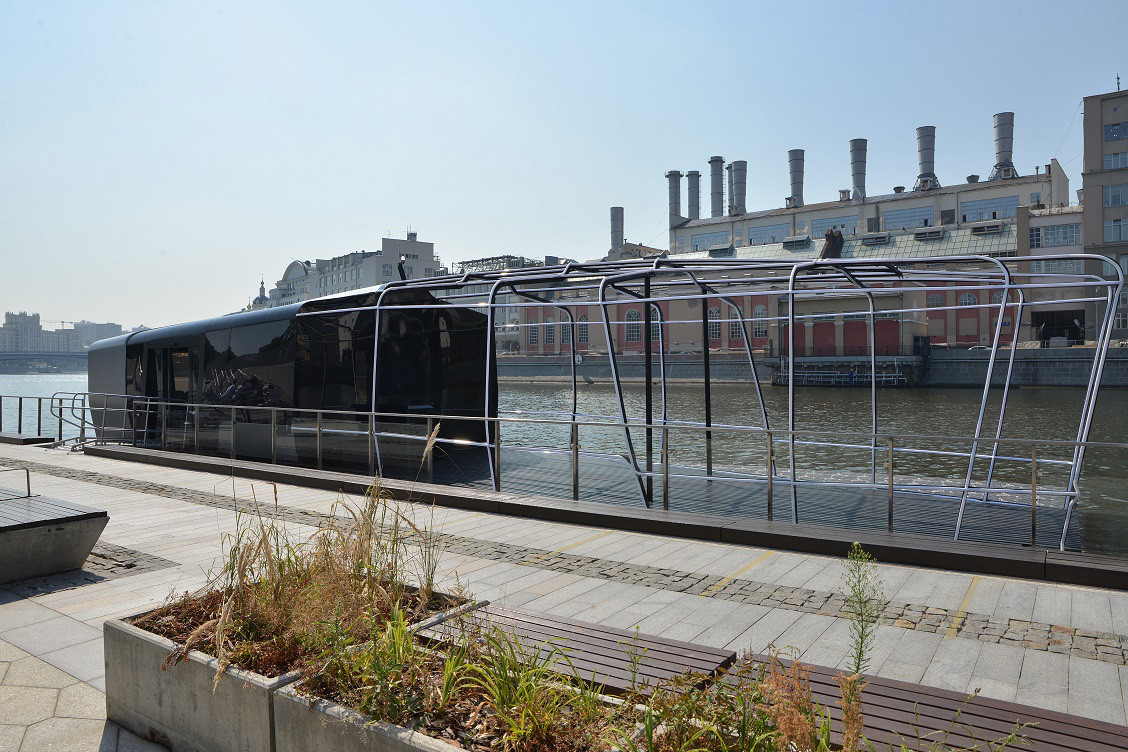
The model of the electrical boat with panoramic windows measures 22 meters in length. The river tram - as Muscovites call them - has a passenger capacity of 42, including two disabled seats. The trams will also get cutting edge info panels, USB docking stations, Wi-Fi, spaces for scooters and bicycles, as well as chairs and desks for working on the go. The boats will be available all year round, according to ‘Mosgortrans’, the regional transport agency.
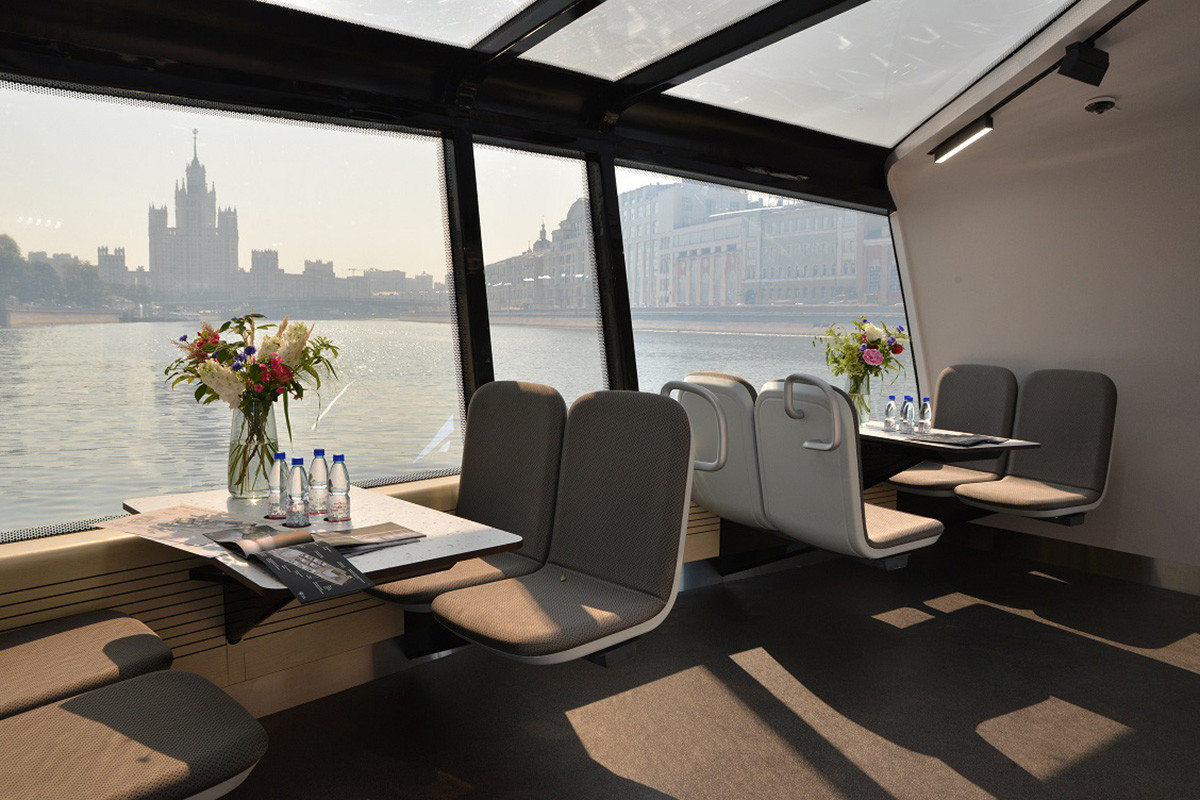
Passengers will be able to pay with their ‘Troika’ public transport card, credit cards or bank cards.
The main clientele targeted are people living in Moscow’s river districts - the upcoming trams will shorten their travel time in comparison to buses and other transportation by five times, Mosgortrans stated.

As the river trams are being rolled out, Moscow docks will also see mini-stations, some of which will also be outfitted with charging docks for speed-charging the boats.
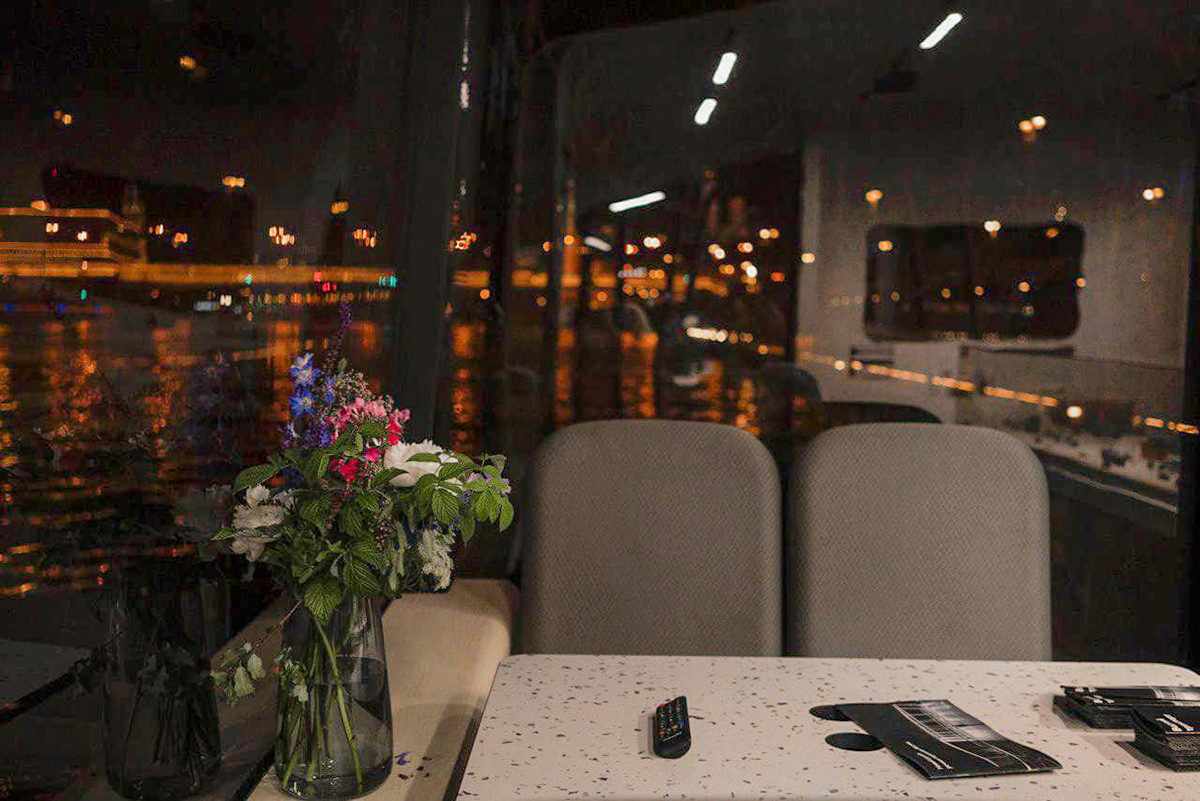
Moscow is set to announce the start of the tender for construction and supply in September 2021. The first trams are scheduled to launch in June 2022 on two routes - from Kievskaya Station, through Moscow City, into Fili; and from ZIL to Pechatniki.
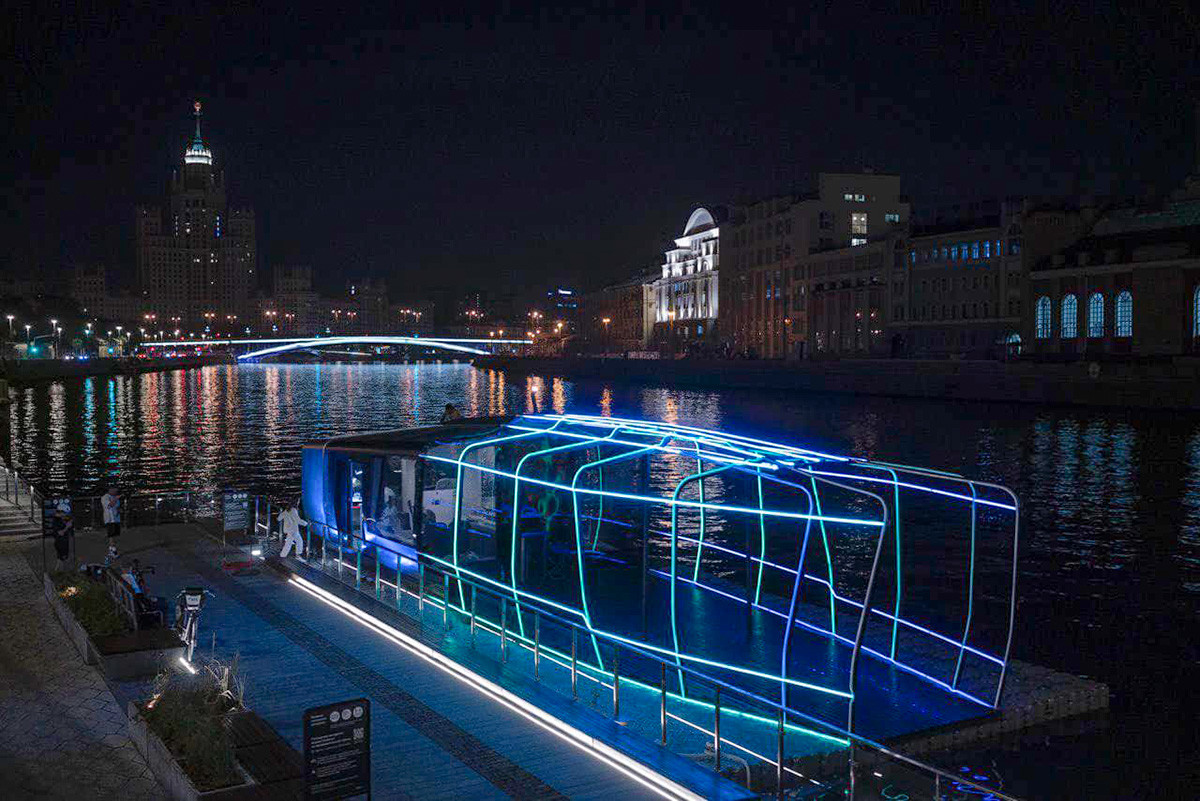
“Two full-scale routes will be created in 2022-2023, serviced by 20 river trams and a number of river stations. We’ll continue to develop them further if they prove to be popular with the citizens,” the Moscow mayor said .
If using any of Russia Beyond's content, partly or in full, always provide an active hyperlink to the original material.
to our newsletter!
Get the week's best stories straight to your inbox
- Face it: Moscow Metro to introduce FACIAL payment technology
- What does Moscow smell like?
- Riding Moscow’s train of tomorrow (PHOTOS)
This website uses cookies. Click here to find out more.
THE 10 BEST Moscow Boat Rides & Cruises
Boat rides & cruises in moscow.
- Boat Rentals
- Scuba & Snorkeling
- Fishing Charters & Tours
- Water Sports
- Stand-Up Paddleboarding
- Surfing, Windsurfing & Kitesurfing
- Kayaking & Canoeing
- Waterskiing & Jetskiing
- Parasailing & Paragliding
- River Rafting & Tubing
- Dolphin & Whale Watching
- Speed Boats Tours
- Submarine Tours
- 5.0 of 5 bubbles
- 4.0 of 5 bubbles & up
- 3.0 of 5 bubbles & up
- 2.0 of 5 bubbles & up
- 3rd Transport Ring (TTK)
- District Central (TsAO)
- Garden Ring
- District Northern (SAO)
- Good for Big Groups
- Good for Couples
- Good for a Rainy Day
- Budget-friendly
- Good for Kids
- Hidden Gems
- Honeymoon spot
- Good for Adrenaline Seekers
- Adventurous
- Things to do ranked using Tripadvisor data including reviews, ratings, photos, and popularity.

1. Flotilla Radisson Royal

2. Moscow River Boat Tours

3. Sup-Club

4. Akvanavt Diving Centre

5. Diving Center Crocus City Oceanarium

6. CheapRussia Tours
7. Kite School Kiteclass

8. SUP Center
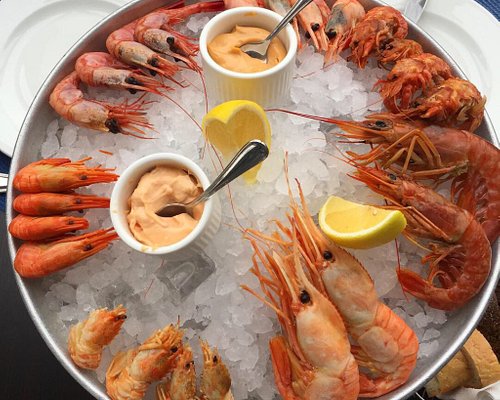
9. Erwin. Reka
11. Easy Russia Tour Guide
12. Lovely Russia Tours

13. Capital River Boat Tours - Moscow Centre

14. Alfa Centr
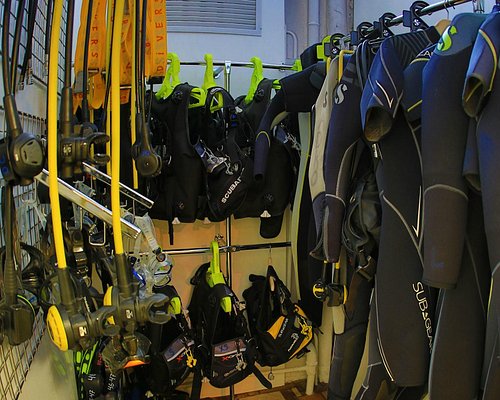
15. Diving Club Divers
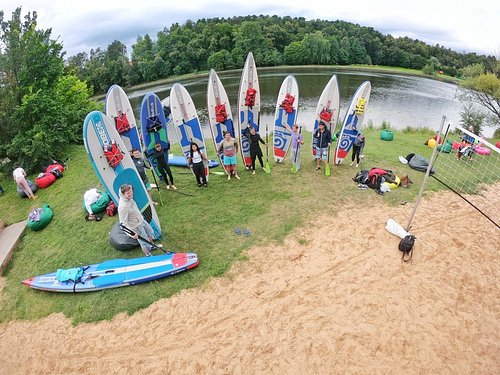
16. Sup Outdoor

17. MORE MOSCOW
19. Soho Sailing Style

20. Diving Center Crocodile

21. Dive-Project

22. Mosparokhodstvo
24. Kosinskiy Children Marine Club

25. Kayak Moscow
26. DIVECLUB CHE

27. Moswake

28. FLOW Moscow

29. Morskiye Volki

30. S-cruises
What travelers are saying

- CheapRussia Tours
- Easy Russia Tour Guide
- Lovely Russia Tours
- MORE MOSCOW
- Insider Moscow Tours
- Flotilla Radisson Royal
- Moscow River Boat Tours
- Capital River Boat Tours - Moscow Centre
- Diving Center Crocus City Oceanarium

IMAGES
VIDEO
COMMENTS
The Laser 2, or Laser II, is a sailboat that was designed by New Zealander Frank Bethwaite and Canadian Ian Bruce as a one-design racer and first built in 1978. Production. The design was built by Bruce's company, Performance Sailcraft, in Canada and also by Vanguard Sailboats in the United States. Production ran from 1978 until 1987, with ...
The LASER 2 has a convoluted history. There was the LASER II FUN, and the LASER II REGATTA, a LASER FUN NEW WAVE, (which added an assym. spinnaker). All retired before 1990. Photo courtesy of Adam Hunt. Sailboat Forum. ... more powerful boat that will be better able to stand up to the wind. Bal./Disp = ballast (lbs)/ displacement (lbs)*100
Laser 2 is a 14′ 5″ / 4.4 m monohull sailboat designed by Bethwaite Design and Ian Bruce and built by Performance Sailcraft between 1978 and 1987. ... There was the LASER II FUN, and the LASER II REGATTA, a LASER FUN NEW WAVE, (which added an assym. spinnaker). All retired before 1990. Suggest Improvements
The Laser 2 (Laser II) is a high-performance racing dinghy designed by Frank Bethwaite in 1979, in a similar fashion to the strict one design Laser dinghy. The Bethwaite family went on to design the well known and highly respected 29er & 49er classes. Designed to be sailed by a crew of two, the lightweight hull comes readily to the plane, which ...
The obvious differences is that the II is bigger than the laser. It can run a main, jib, and spinnaker. There is a larger cockpit area which is good for sailing with another person, hence why it is a double-handed boat. I sail with my 10 year old and 5 year old pretty combortably, but sailing alone is difficult.
Cost so far: £320.00. Being a bit sad I set up a saved search on eBay for the term 'Laser 2' and 'Laser 2 Regatta'. Checking it daily got me a great bargain in a rudder and stock for £140.00. Cost so far: £460.00. I then needed a tiller and extension of which the 'official' site were selling for around £75-80.
Laser Standard / MK2 / ILCA 7. This is the most common Laser rig size, and the original rig on the boat when it was designed. It features a 7.06 square meter sail (about 76 square feet). In 2018, the Laser Class approved a new 'Standard' sail, which is referred to as the 'MKII' or 'Mark 2' to distinguish it from the first version.
A large file, 45 MB, but if you are interested in a Laser 2, you want to watch this video. Laser. Go to Sailing Texas classifieds for current sailboats for sale. 12/9/06, 1972 Laser II, Gloucester, Virginia, asking $1,400. 11/19/16, 1980 Laser II, Lake Canyon, Texas, $1,805.
Short answer laser 2 sailboat: The Laser 2 sailboat is a high-performance sailing dinghy designed for racing and recreational sailing. It features a single trapeze, a mainsail, and a jib, providing exciting and responsive sailing experiences. Its hull is made from fiberglass, making it durable and lightweight. Introduction to the Laser 2 Sailboat: Experience the
If you are a boat enthusiast looking to get more information on specs, built, make, etc. of different boats, then here is a complete review of LASER 2. Built by Performance Sailcraft and designed by Bethwaite Design, the boat was first built in 1978. It has a hull type of Dbrd. Dinghy and LOA is 4.4. Its sail area/displacement ratio 64.69.
Sailing Laser2 sailboat single-handed on Ratzeburger See, Northern Germany, Summer 2012. Music: www.darikas.de
The Laser is the world's most popular adult racing class boat. True to box one design standards, each Laser in the world is identical ensuring the best sailor on the water wins the race, not the boat. The Laser is a challenging boat that rewards athleticism, subtle steering and trimming techniques, as well as the tactical excellence of the sailor.
Skipper's are made in England and are hard to find in the States. Hull has (2) spots where the fiberglass has been repaired, but it is water tight. Located 30 min South of Atlanta $950 Cash. Call or Text 404-788-1026.Sunfish, sail boat, dinghy, laser, optimist, snark.
This is the most common Laser rig size, and the original rig on the boat when it was designed. It features a 7.06 square meter sail (about 76 square feet). In 2018, the Laser Class approved a new 'Standard' sail, which is referred to as the 'MKII' or 'Mark 2' to distinguish it from the first version. The difference, among other things, is in ...
Homepage - LaserPerformance. The Cascais is the ultimate rotomolded multi-purpose sailing dinghy. Its versatility and innovative design brings together exceptional handling, speed and stability allied with its spacious cockpit and 3 rig/ sail versions makes this the ideal platform for all levels of sailors. We believe that rotomolded boats ...
LASER II preowned sailboats for sale by owner. LASER II used sailboats for sale by owner.
World Sailing - Laser II
Moscow City: View Moscow Beneath Your Feet. $96. Details. River Cruise on Luxurios Radisson Ship with a guided excursion: time to relax and soak in the gorgeous Moscow landscape. Our guide will accompany you and reveal the details behind the structures on the river banks around you.
About Us. Baird Maritime, launched in 1978, is one of the world's premier maritime publishing houses.. The company produces the leading maritime new portal BairdMaritime.com, home of the world famous Work Boat World, Fishing Boat World, Ship World, Ausmarine, and Commercial Mariner sub-sites, and the industry-leading ship brokerage platforms WorkBoatWorld.com and ShipWorld.com.
daysailer. Hull: fiberglass monohull. Location: Longboat Key Barrier island in front of Sarasota, Florida. Asking: $4,000. Featured Sailboat Added 31-Jan-2024 More Details.
On July 15, 2021, on the dock of Moscow's 'Zaryadye' park, mayor Sergey Sobyanin was shown the first model of the upcoming river cruise boat. The model of the electrical boat with panoramic ...
Explore the scenic and historic attractions of Moscow from the water with the best boat tours and cruises. Enjoy the views of the Kremlin, the Cathedral of Christ the Savior, and the Sparrow Hills on a relaxing or informative boat ride. Or, spice up your trip with some water sports and activities in Moscow. Find out more on Tripadvisor.